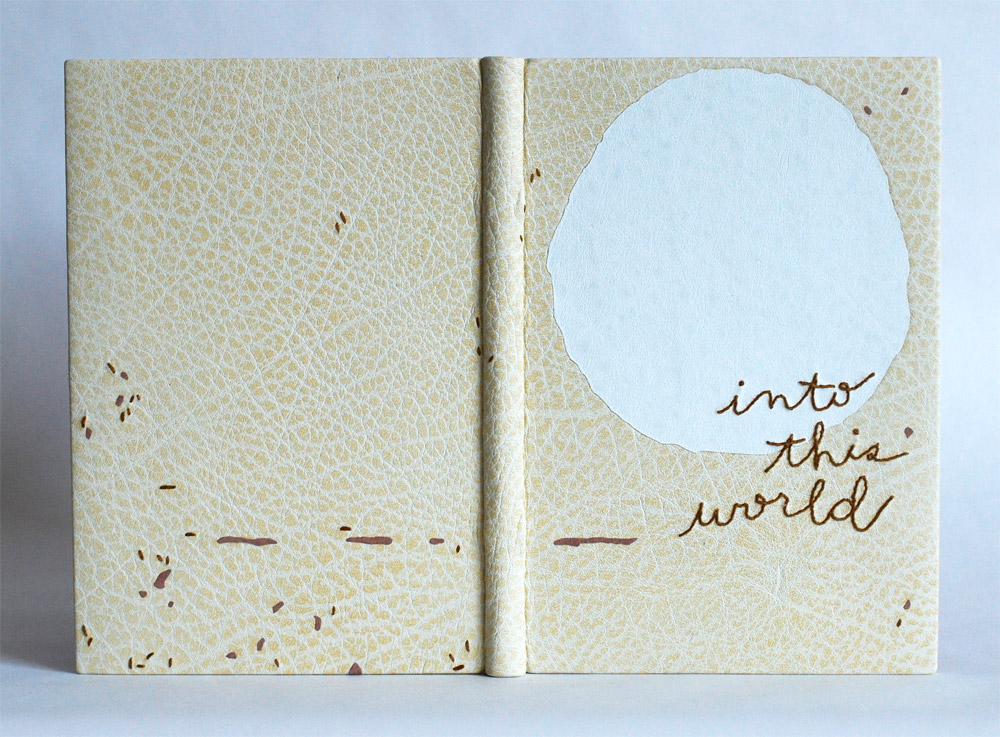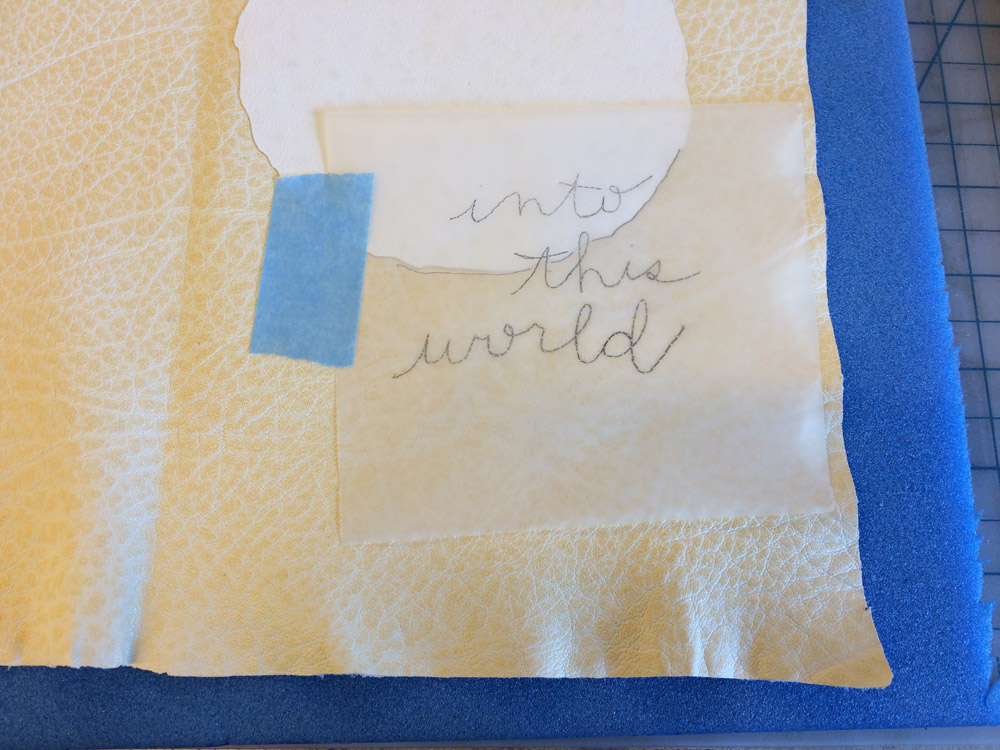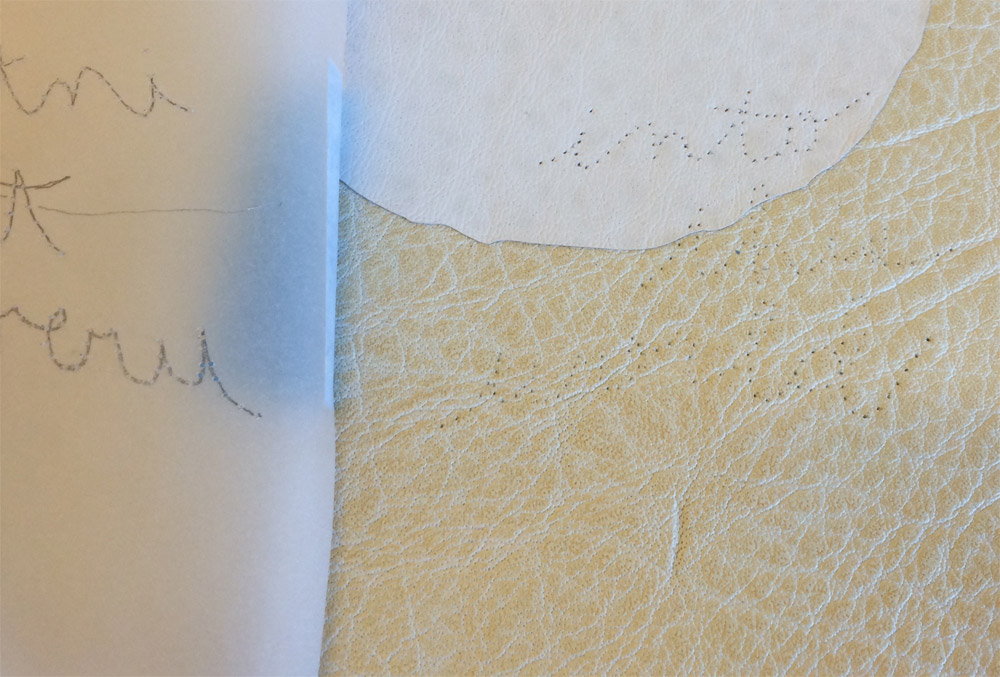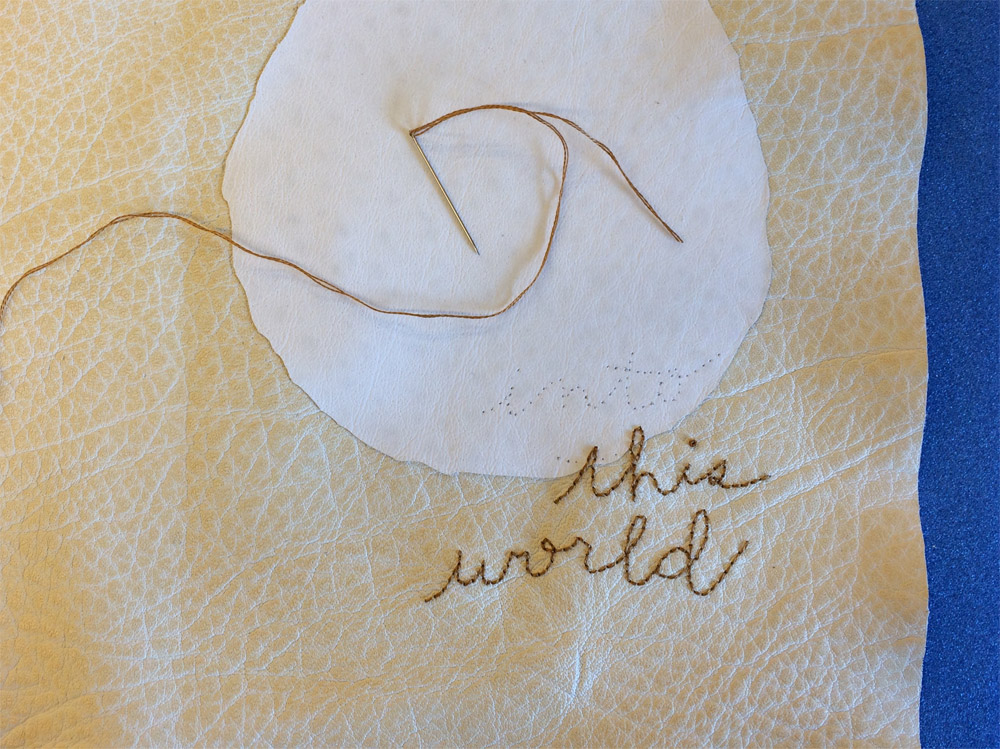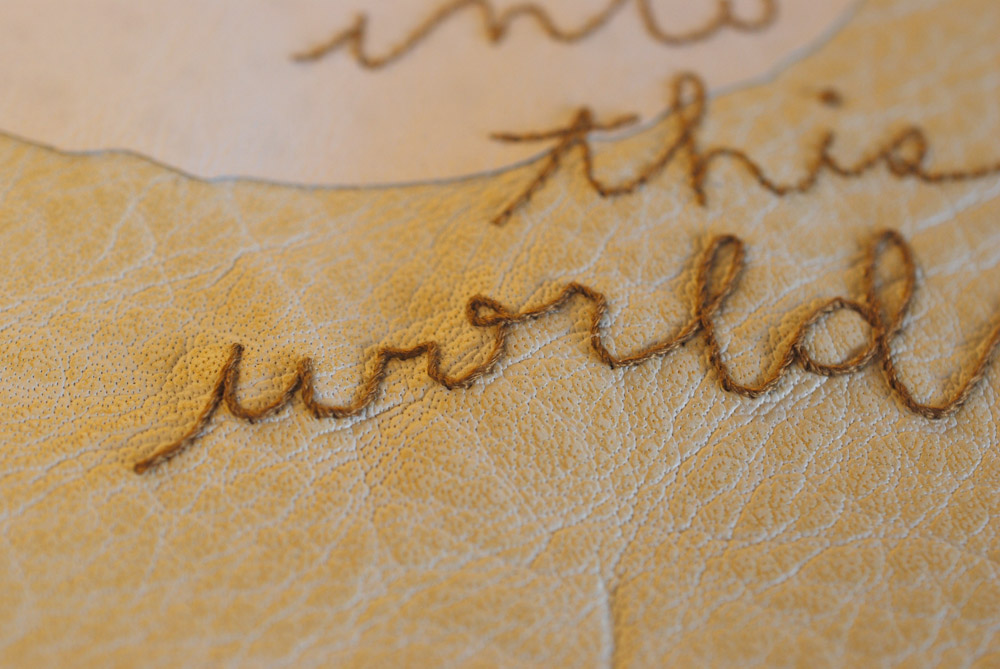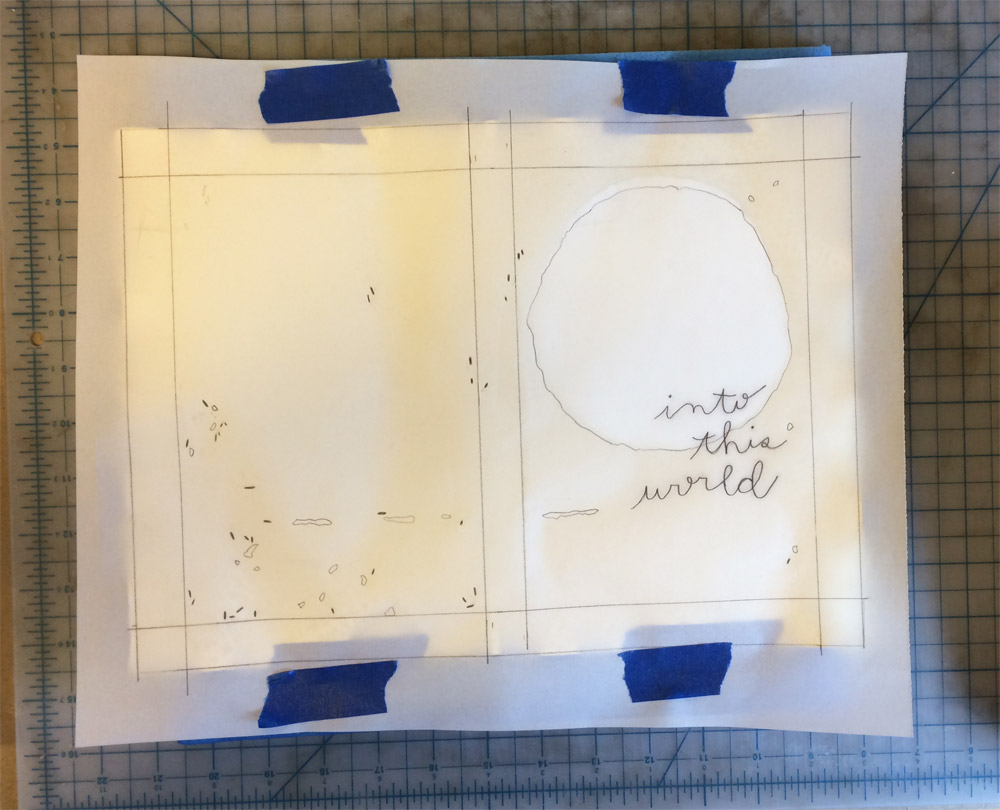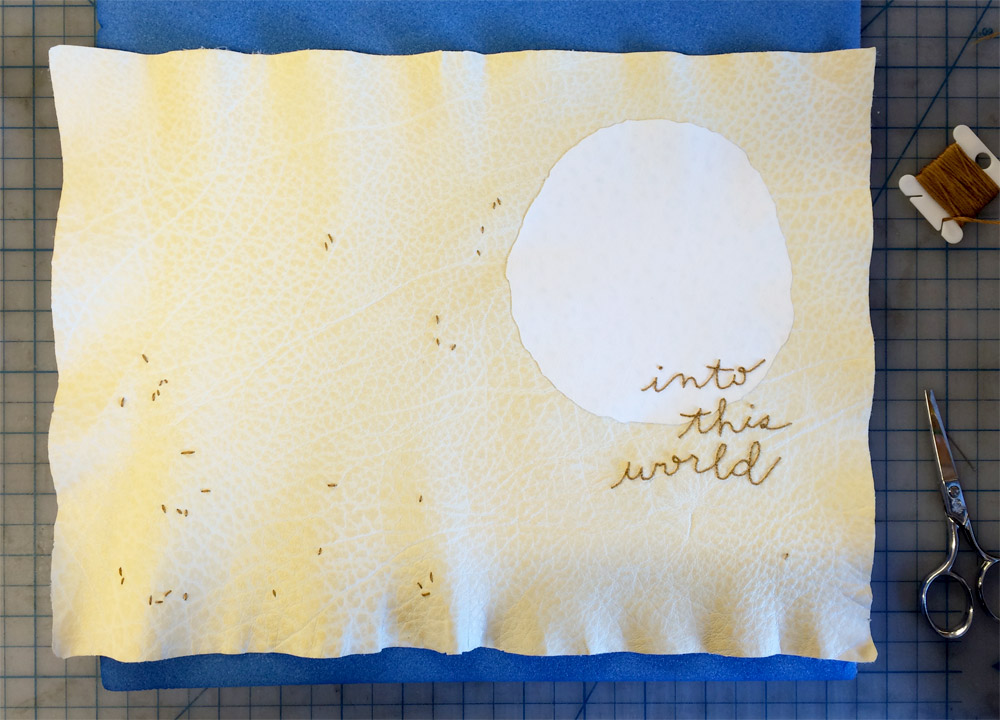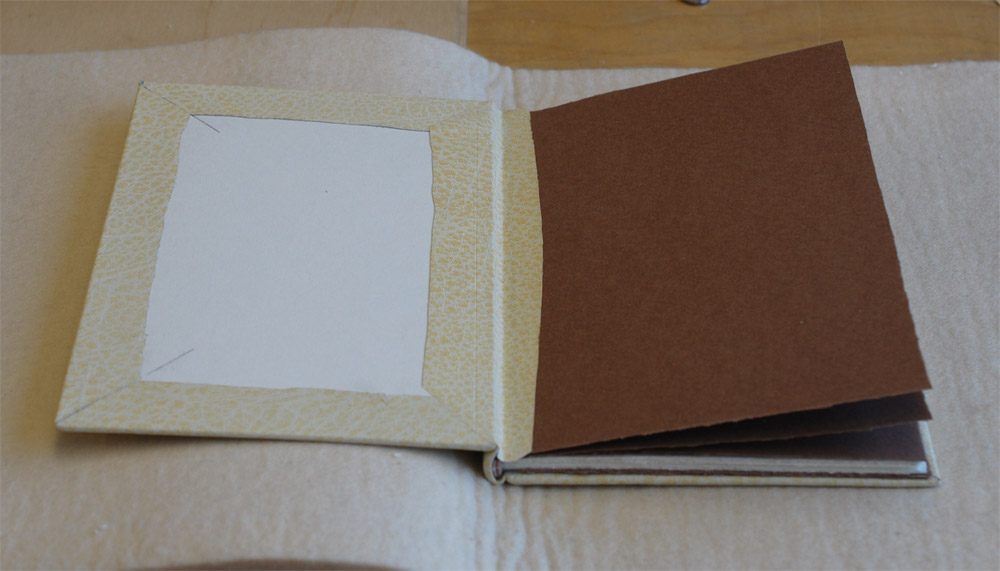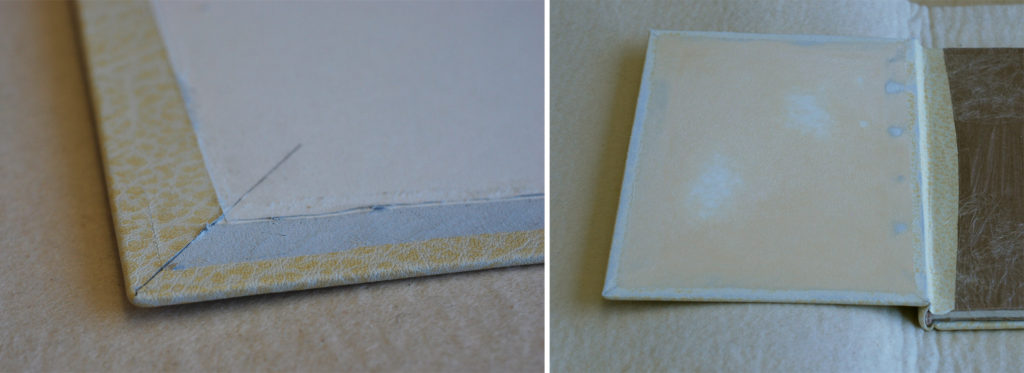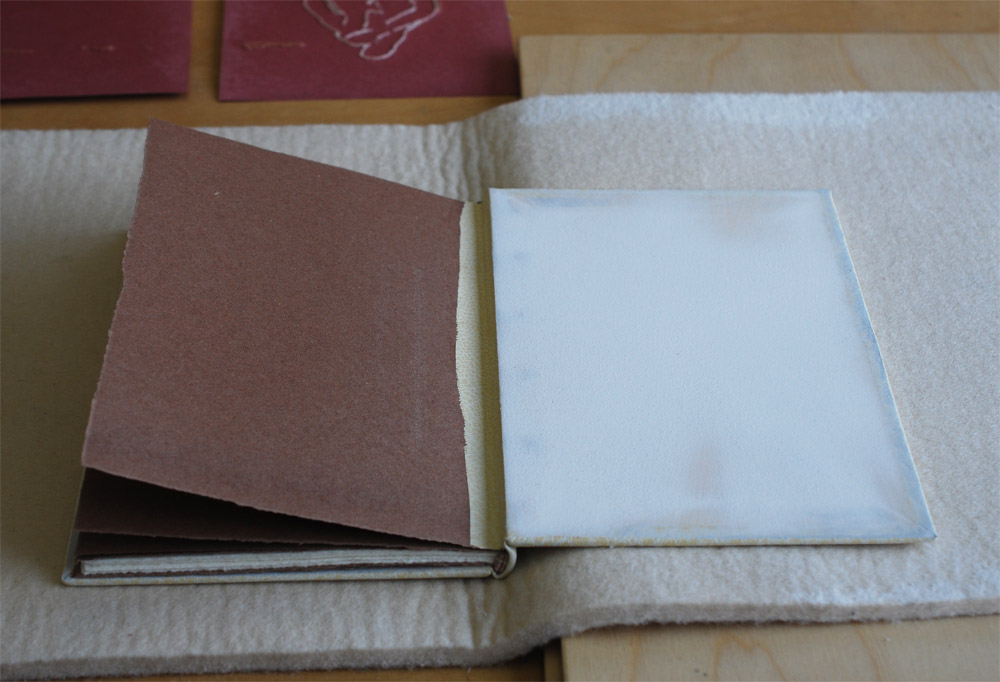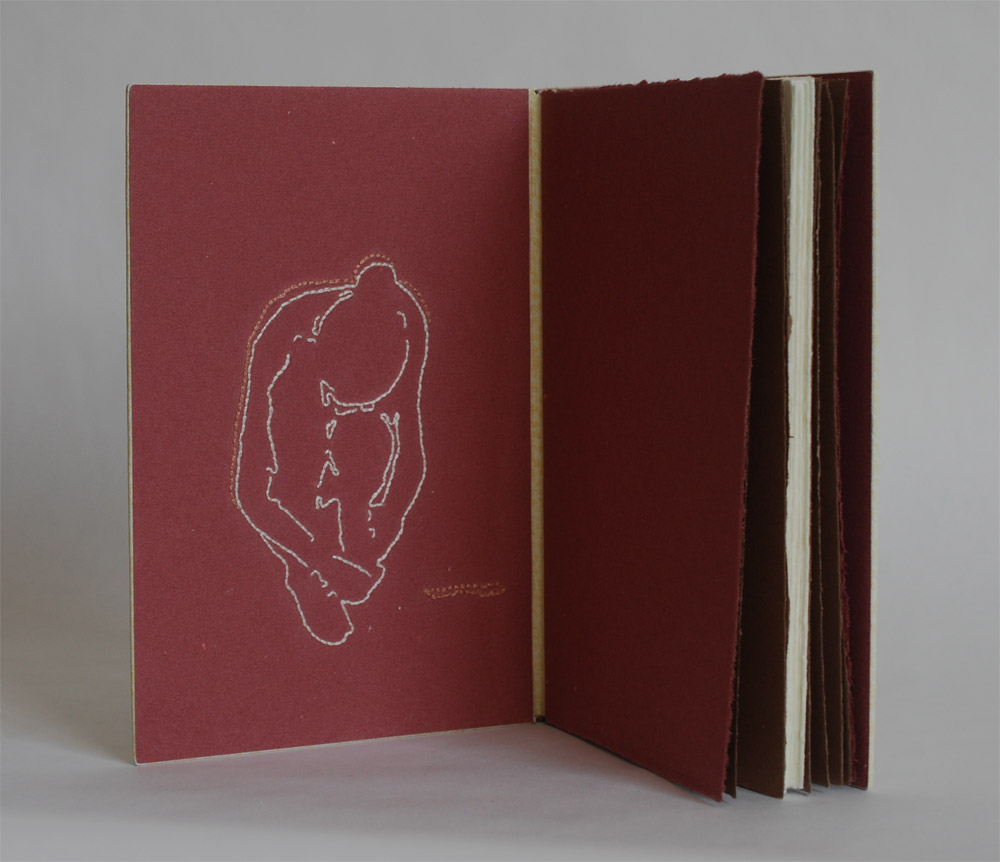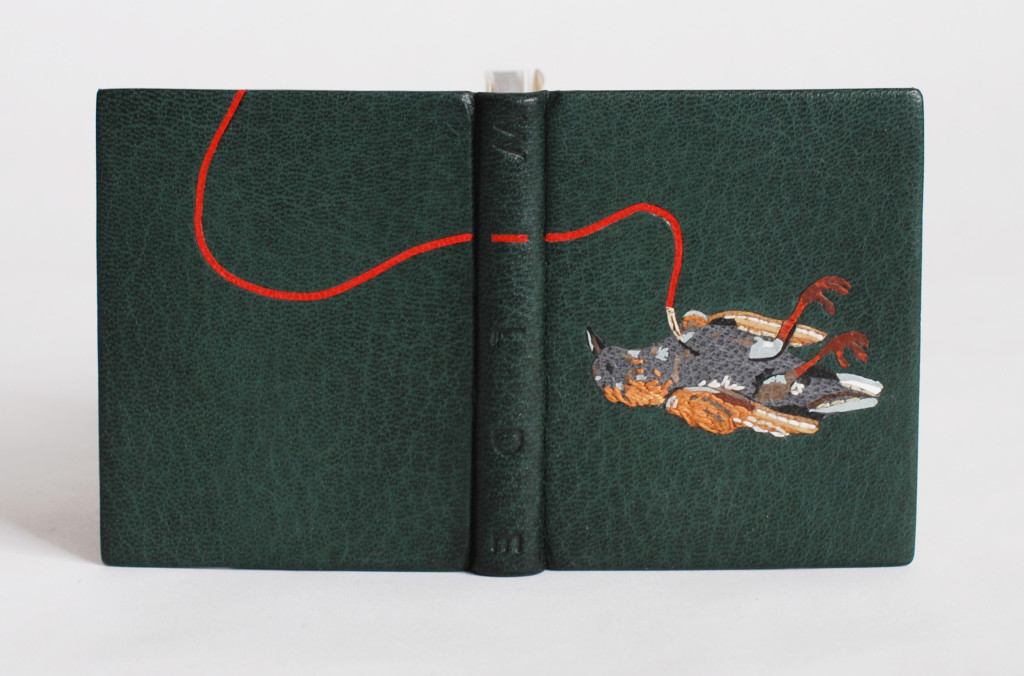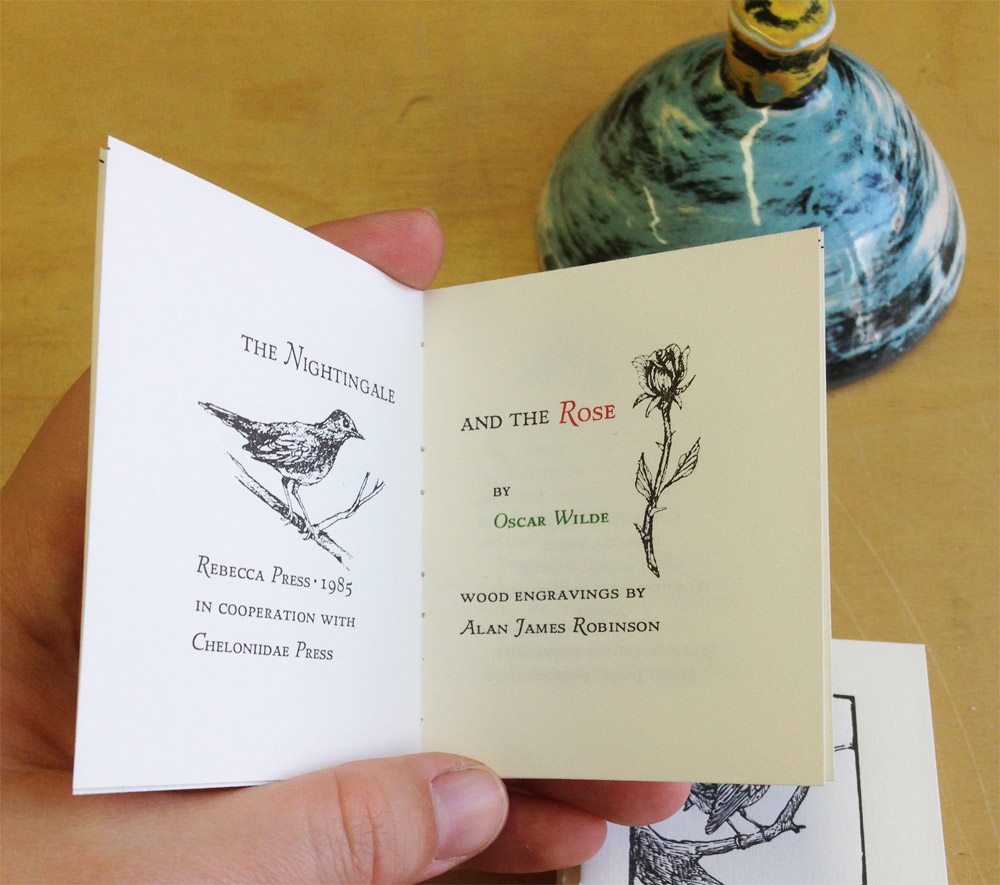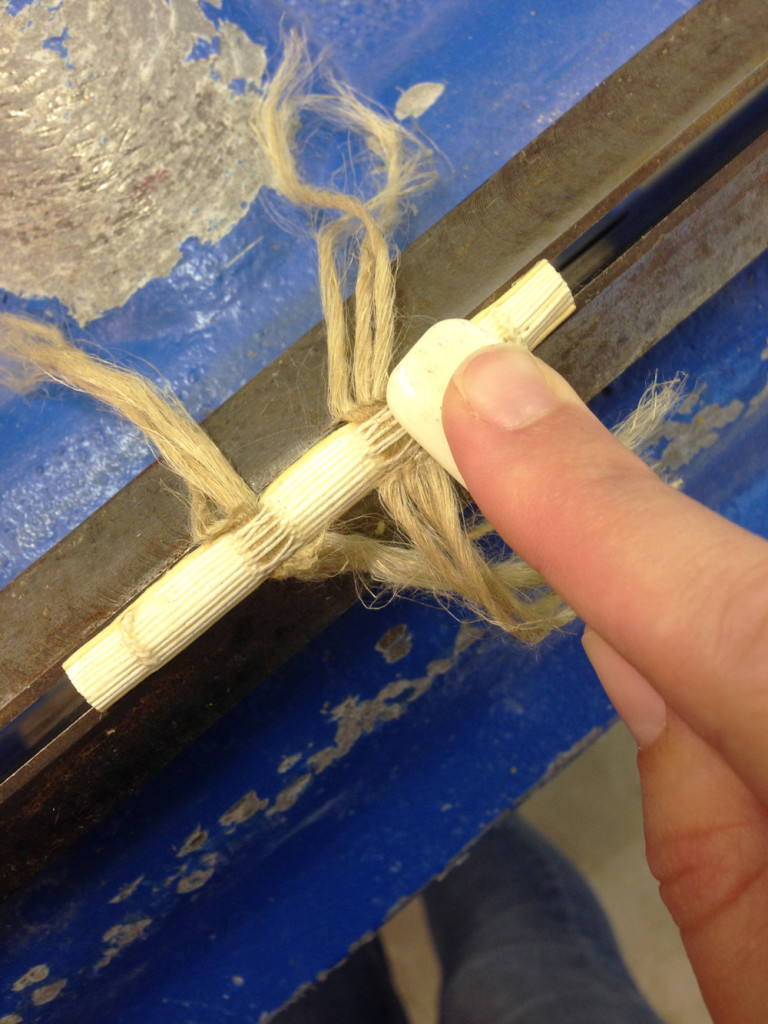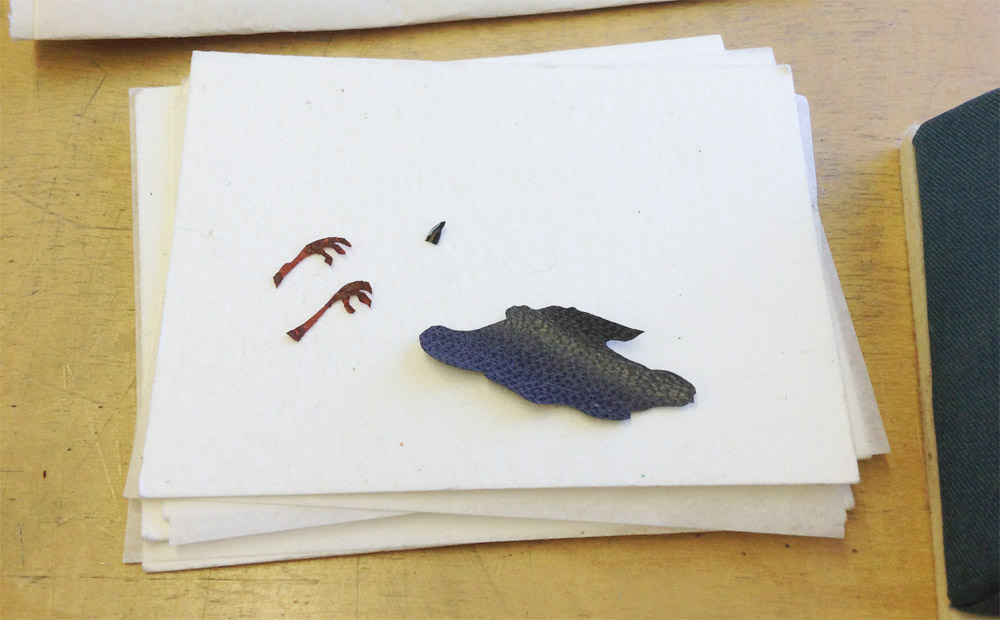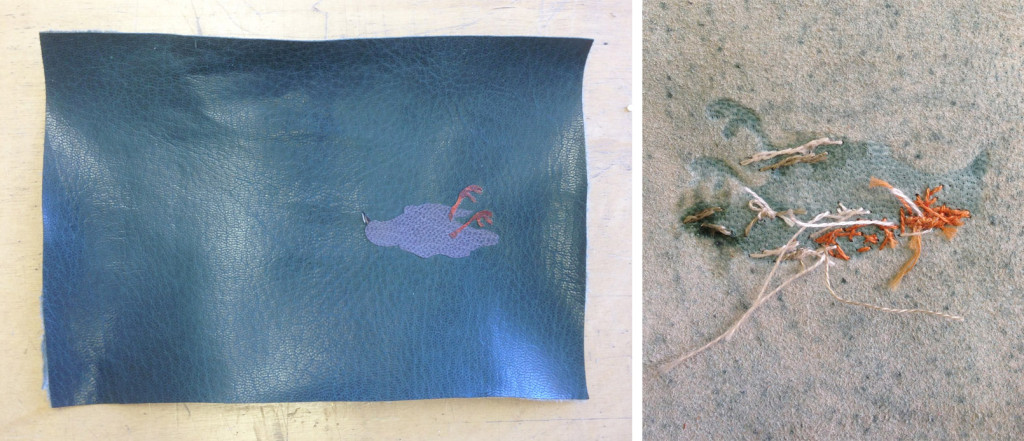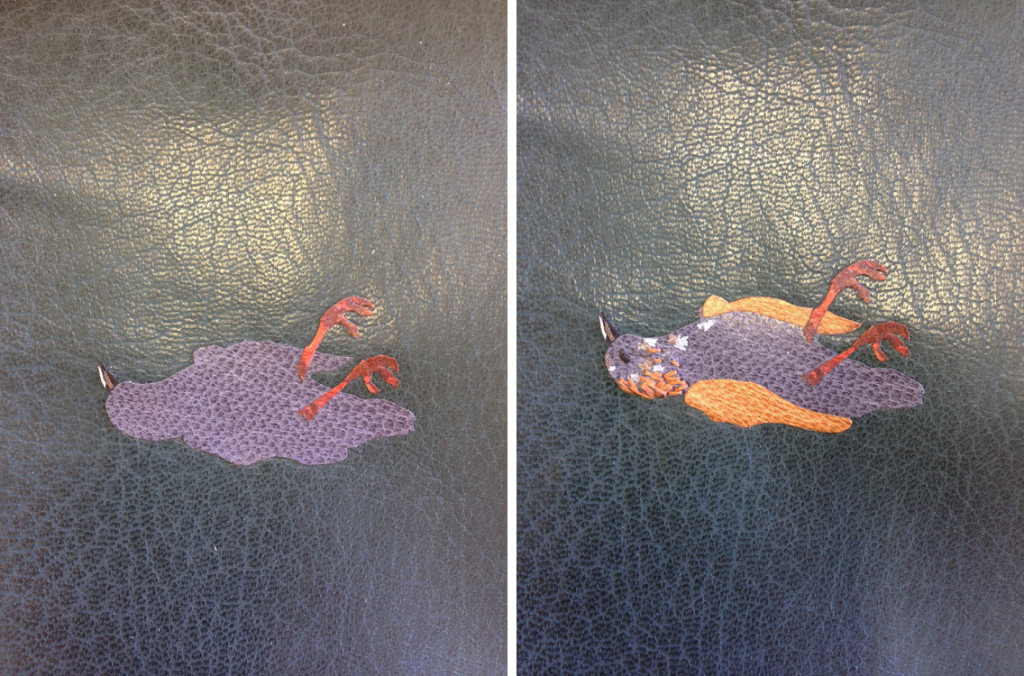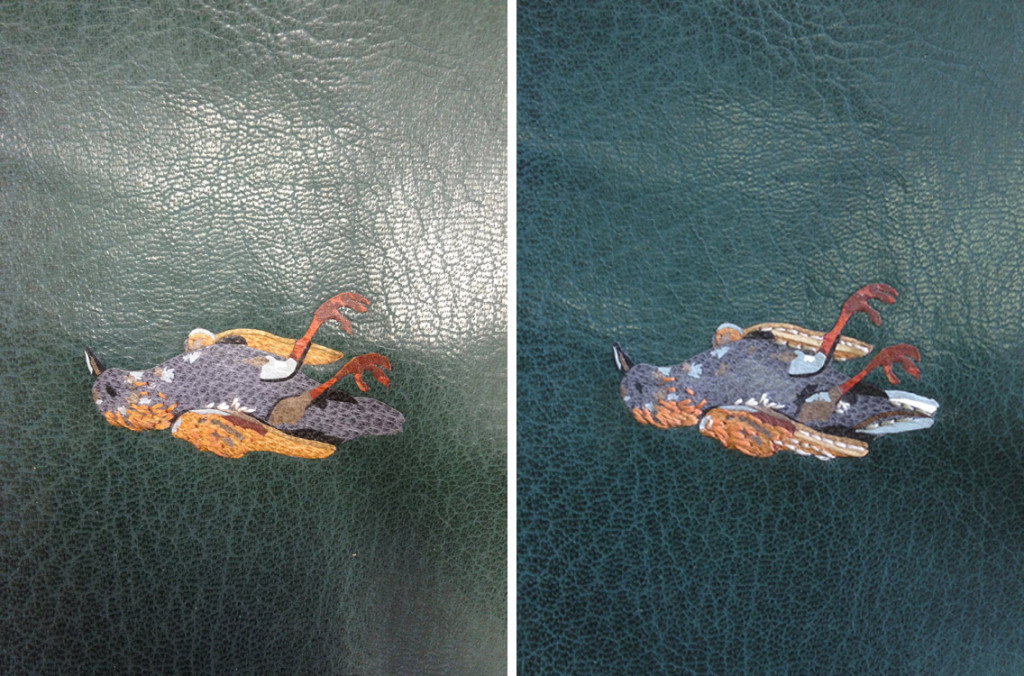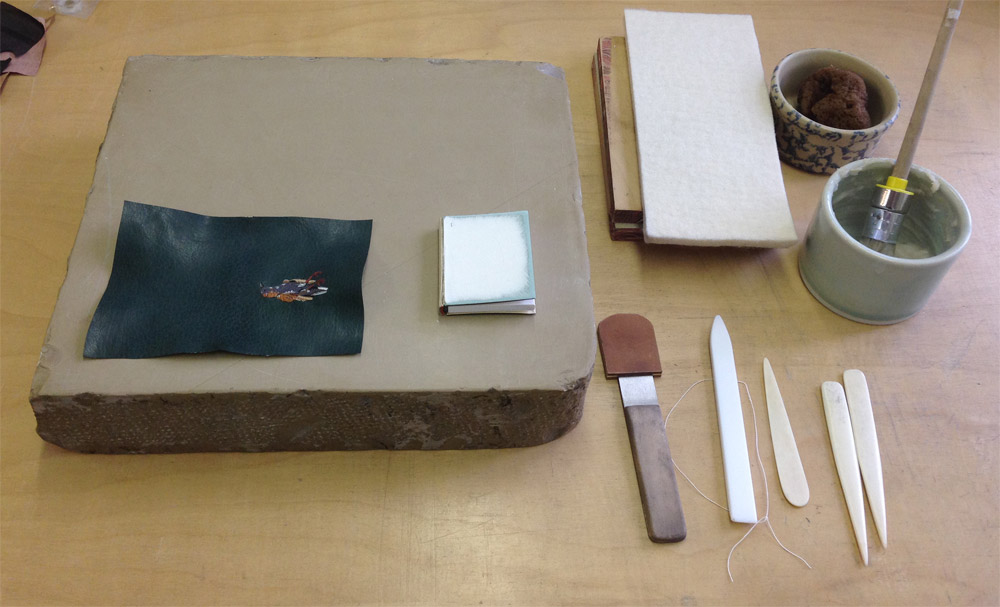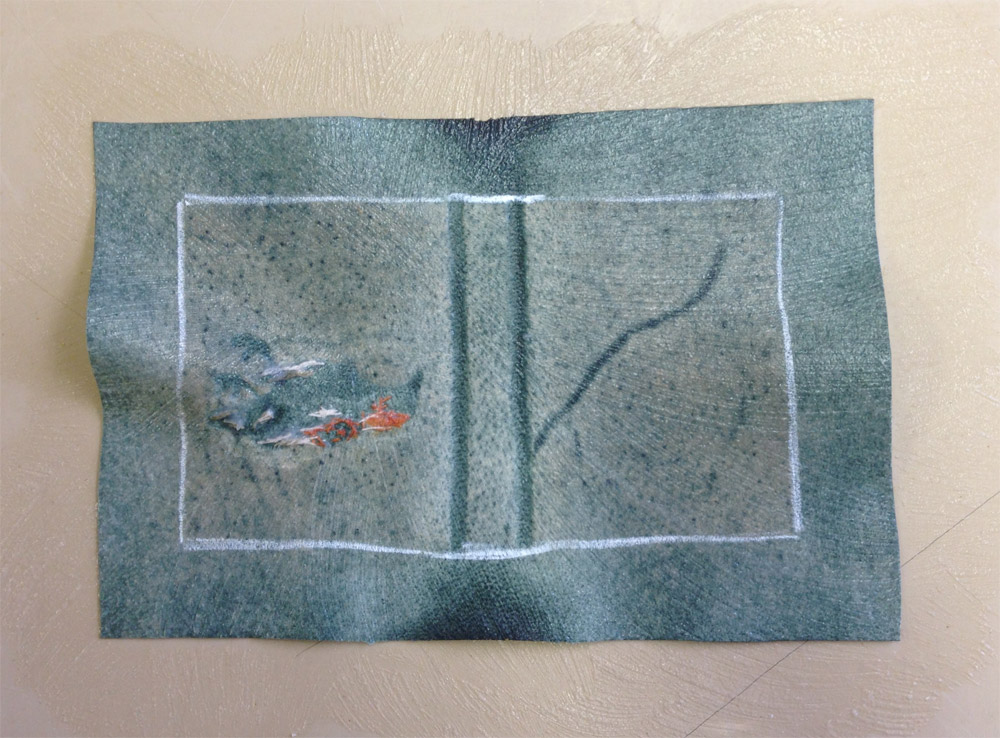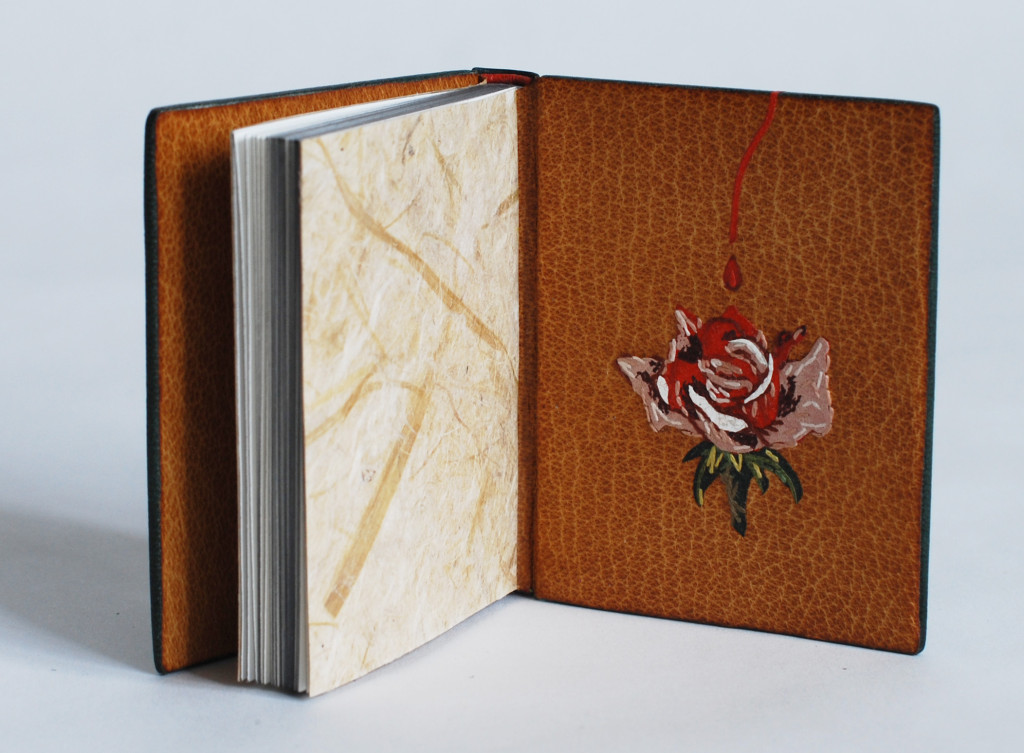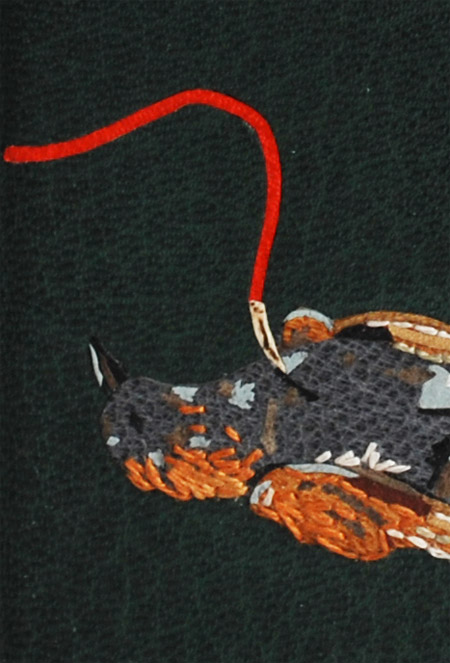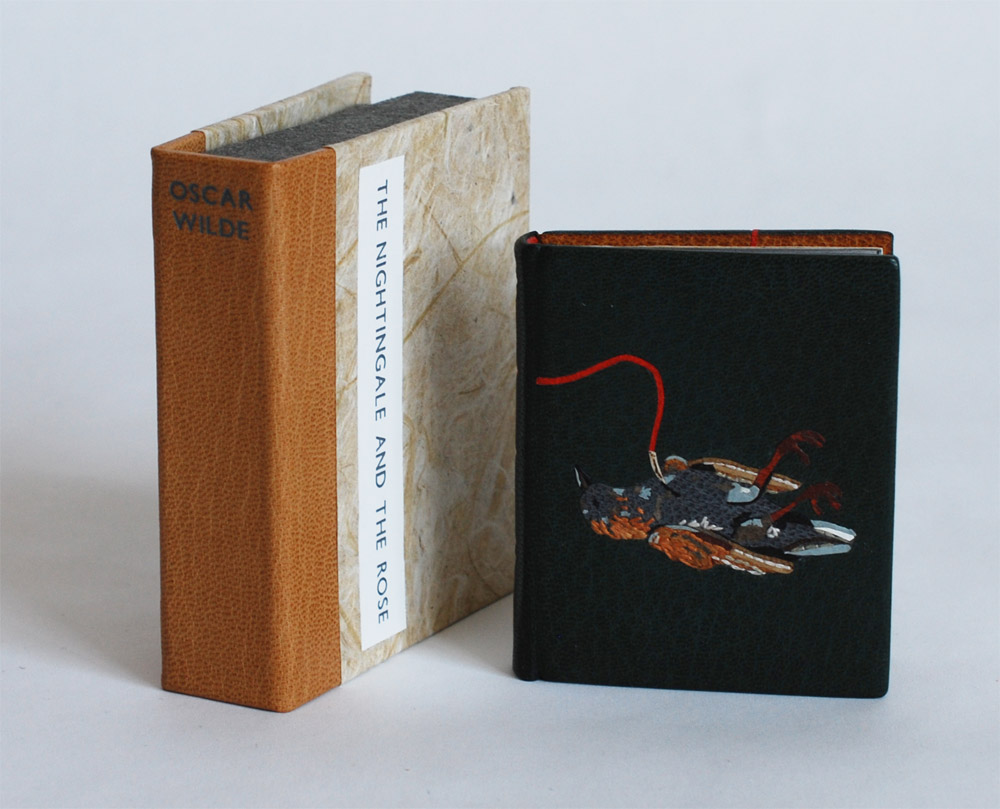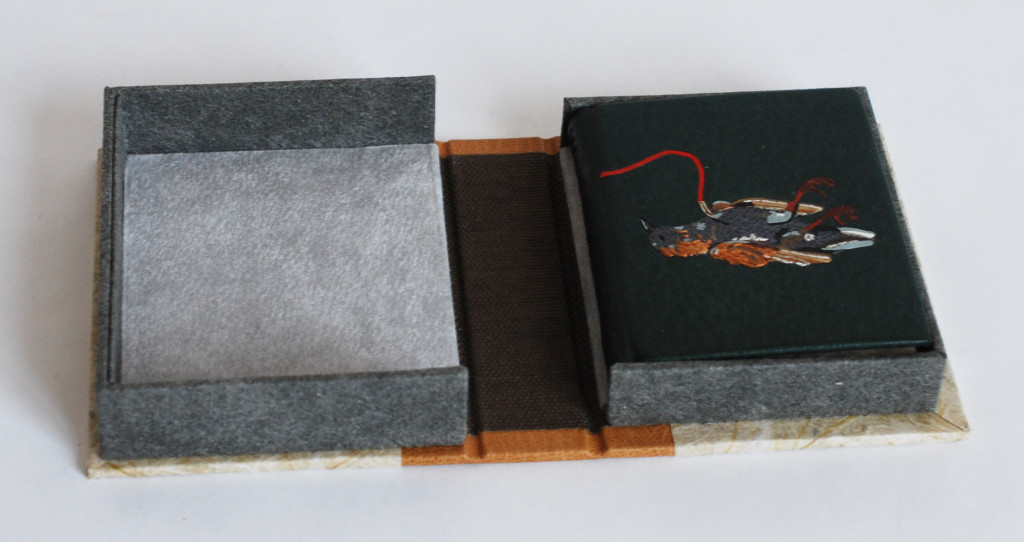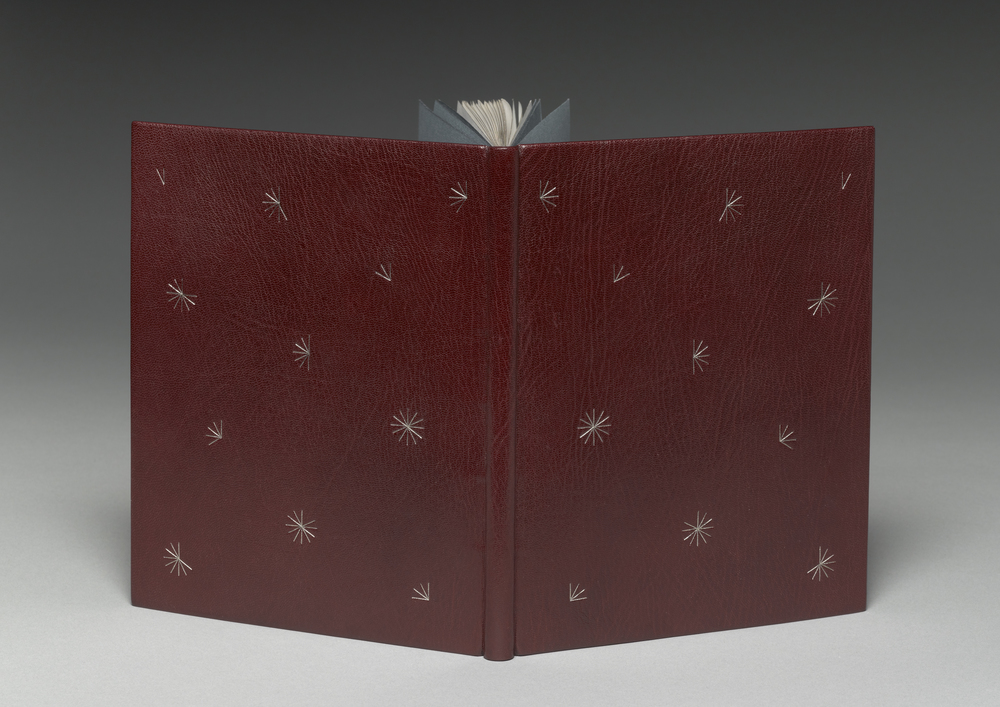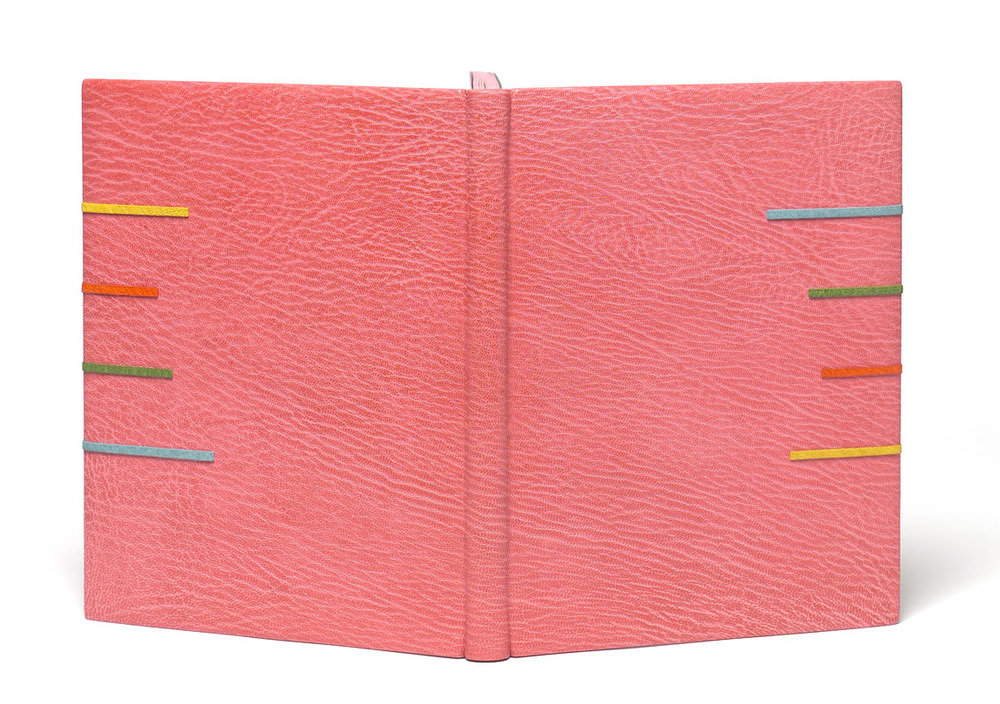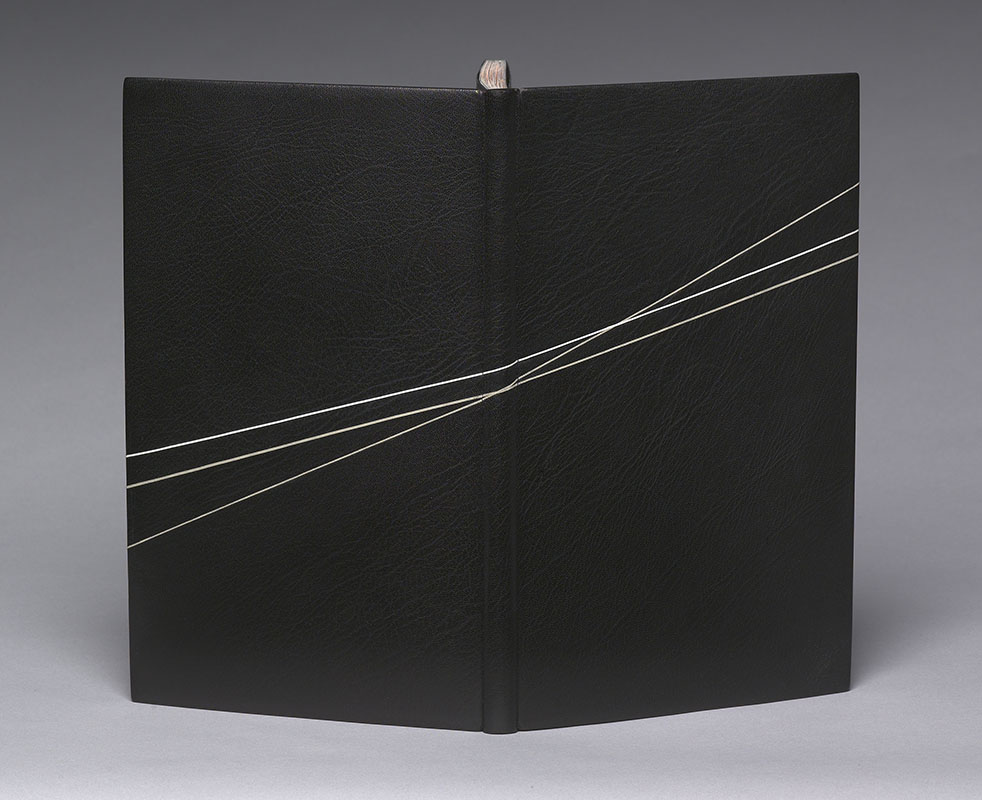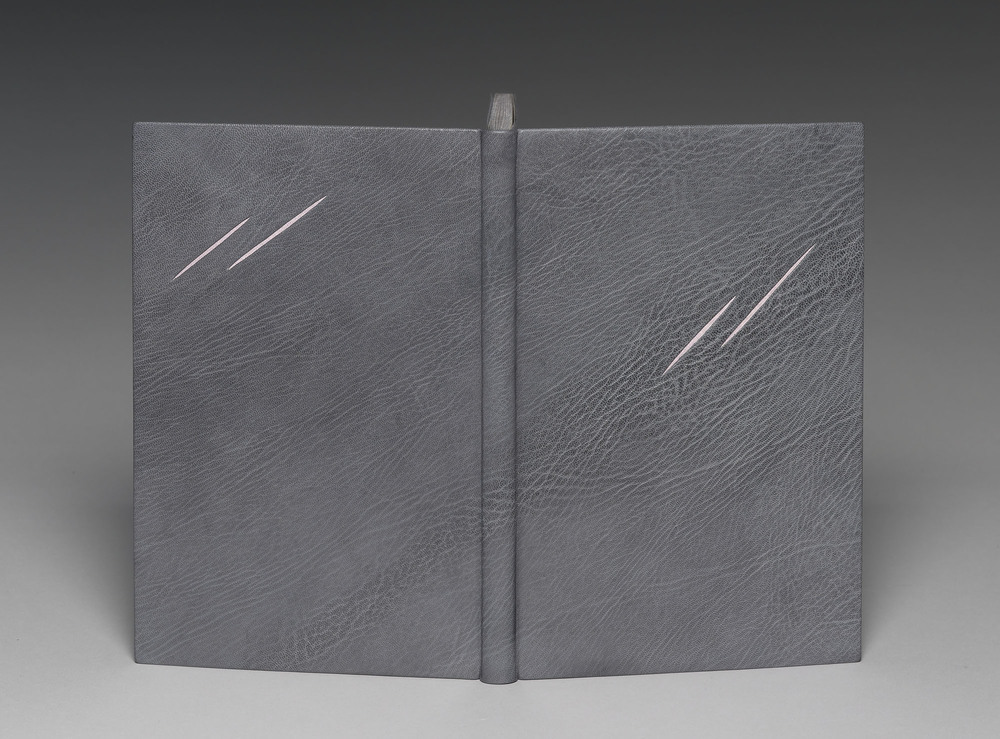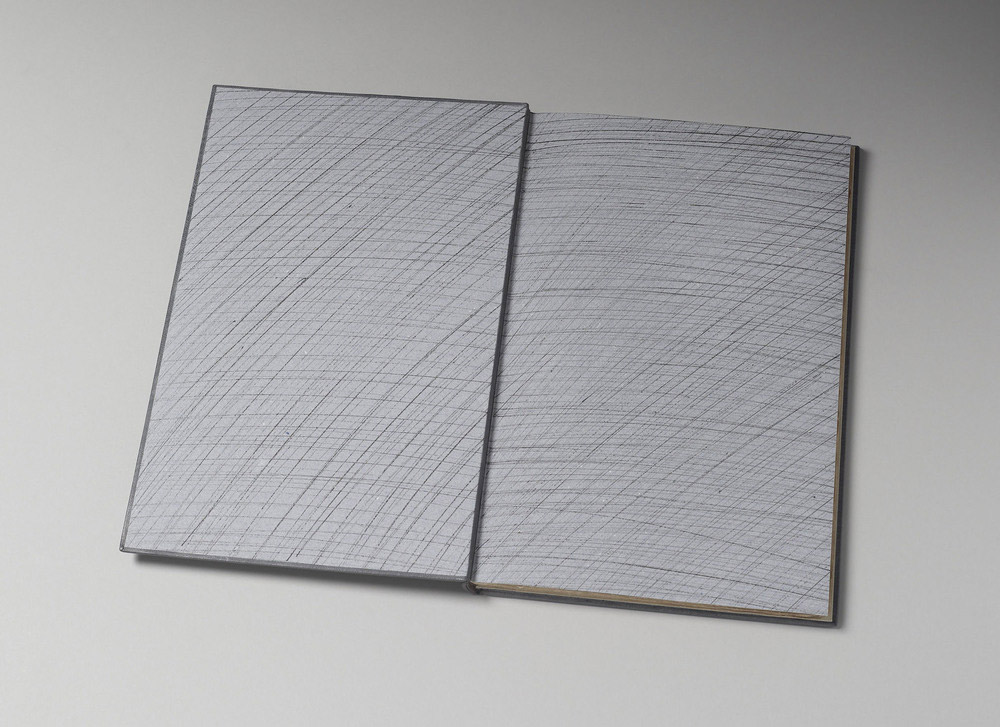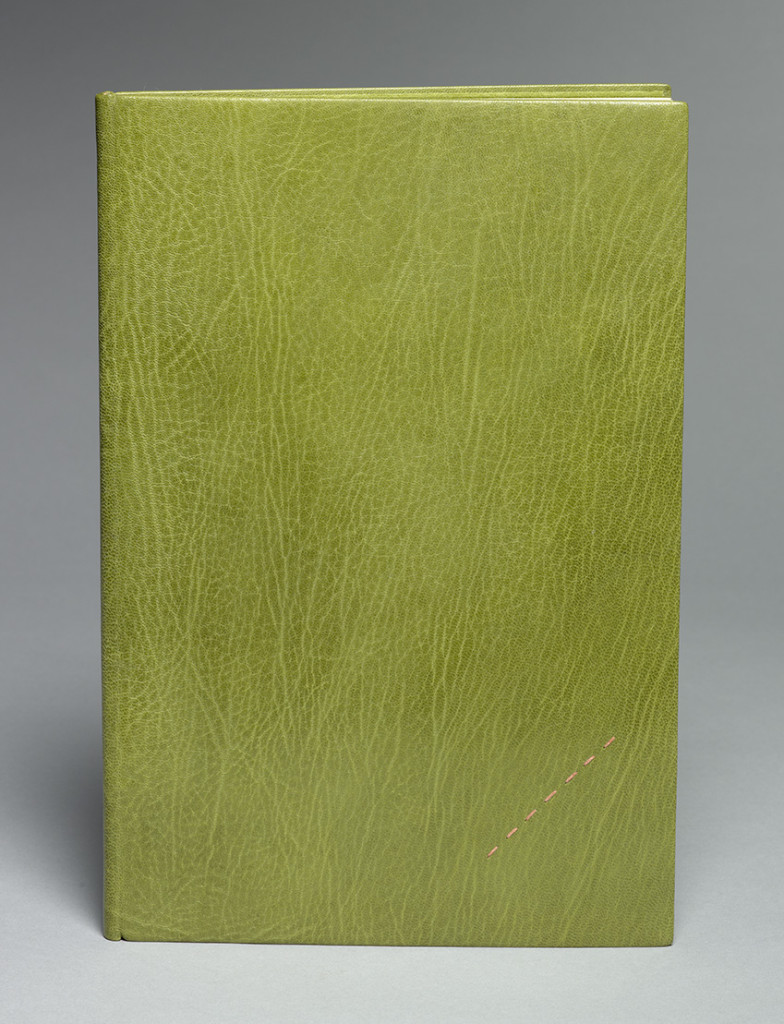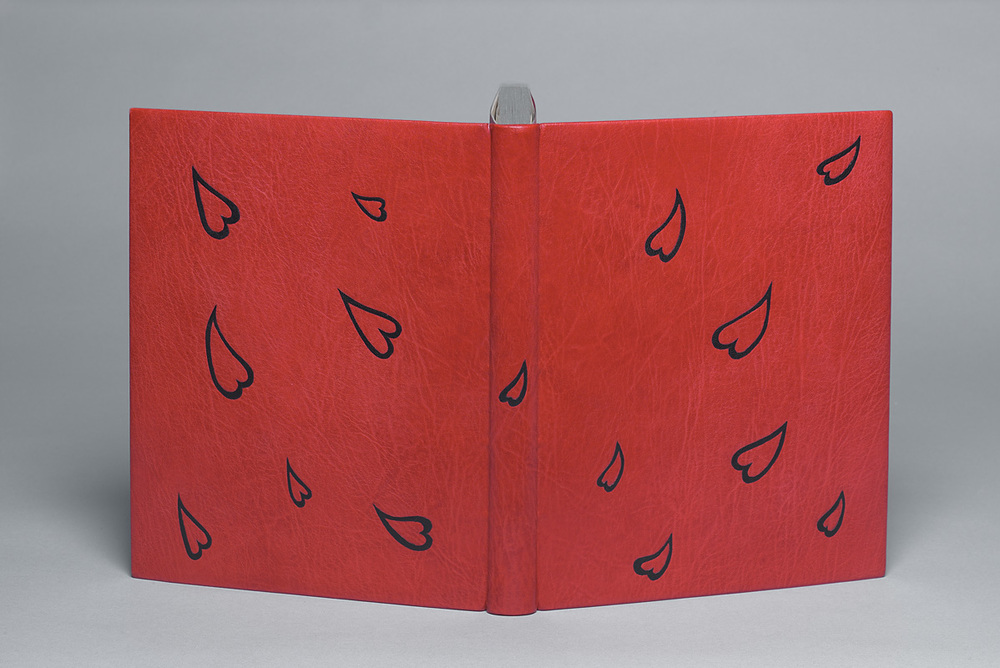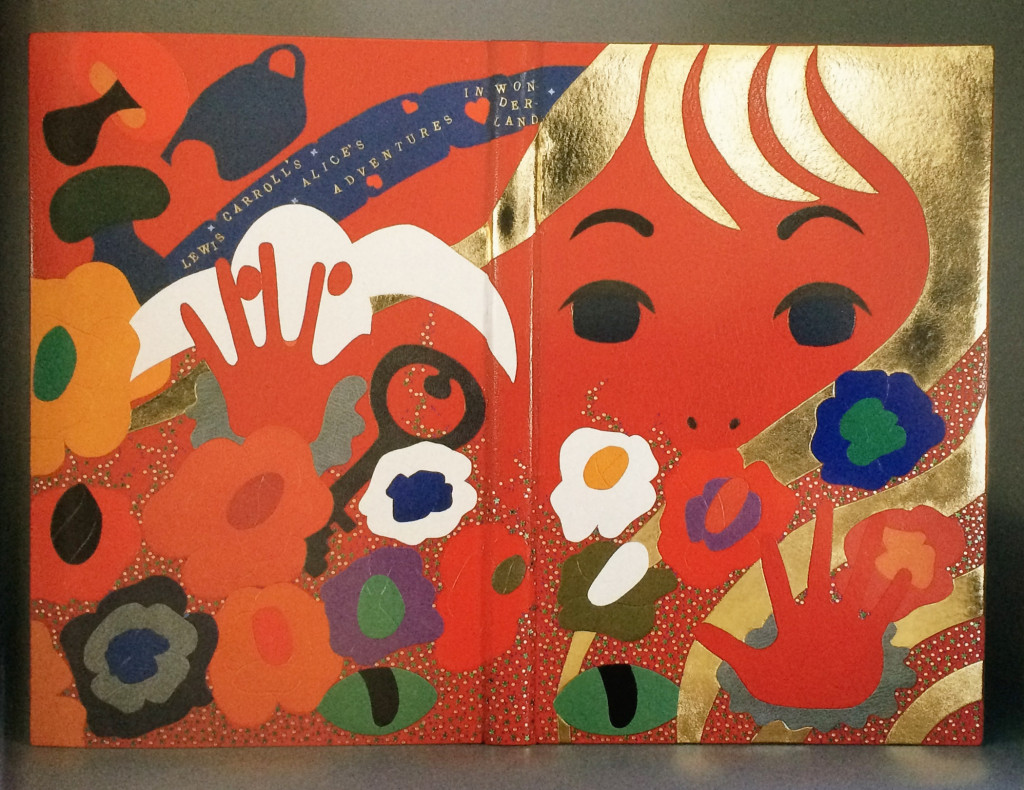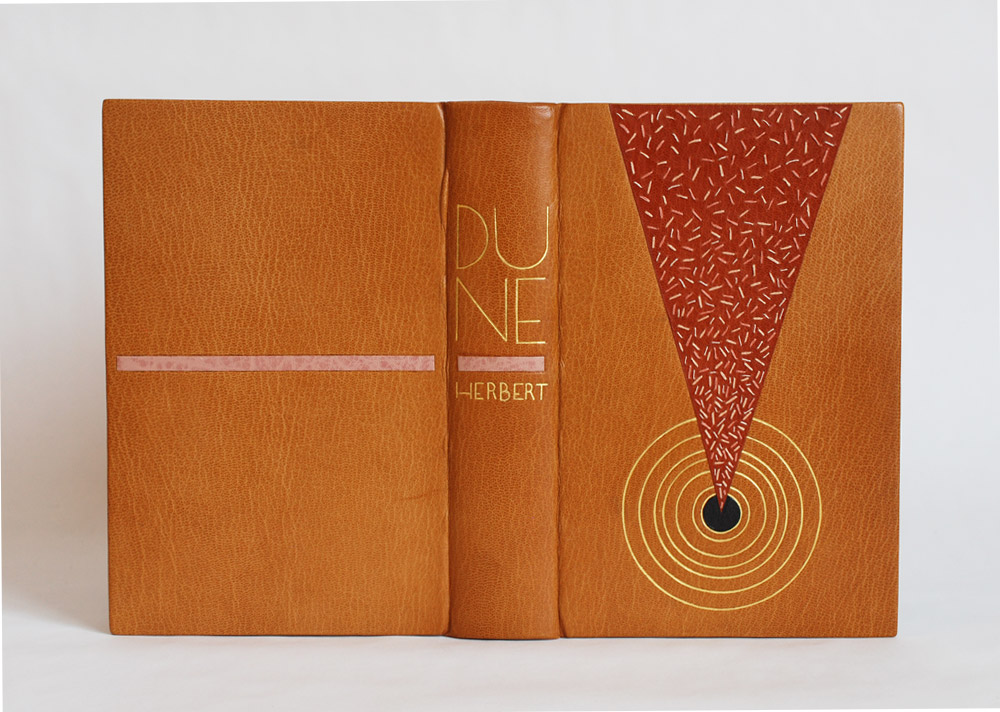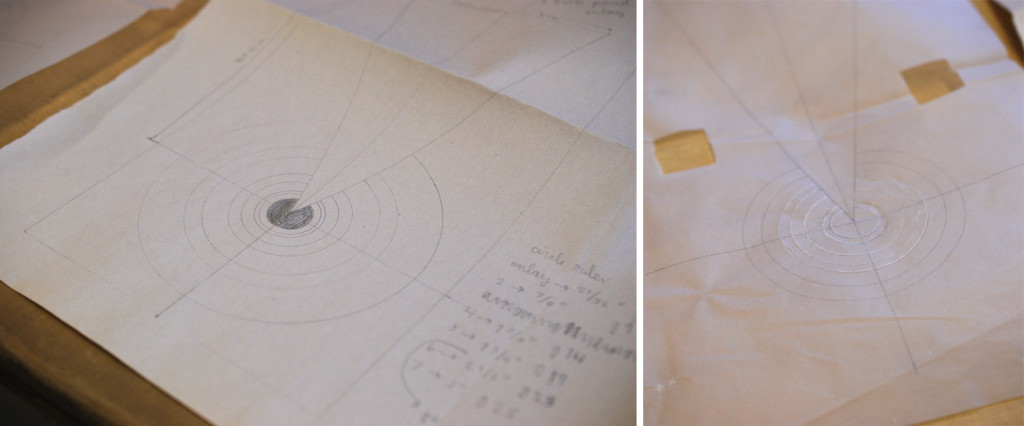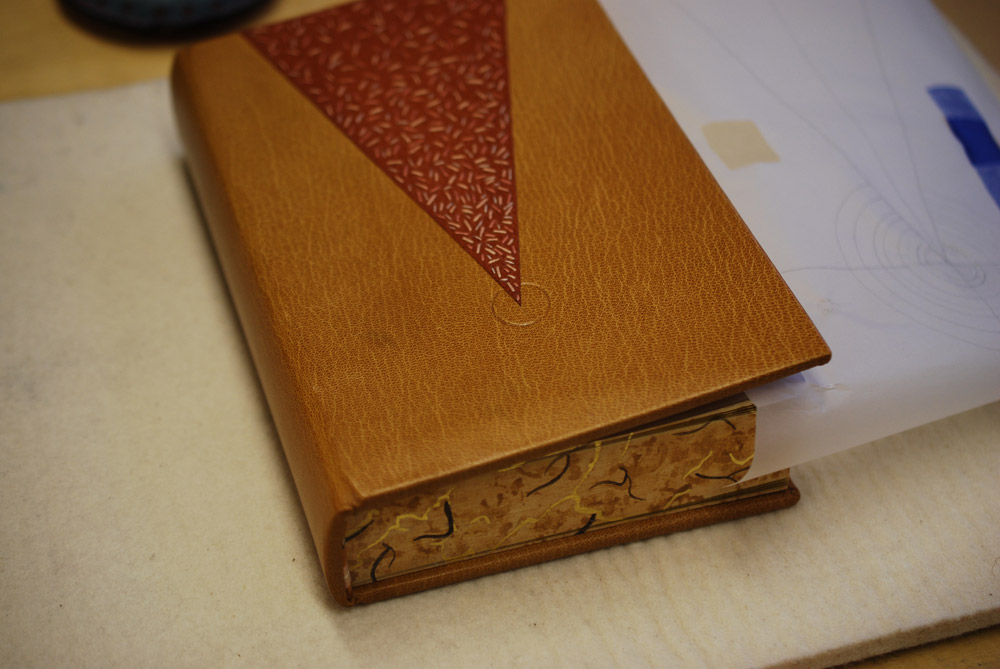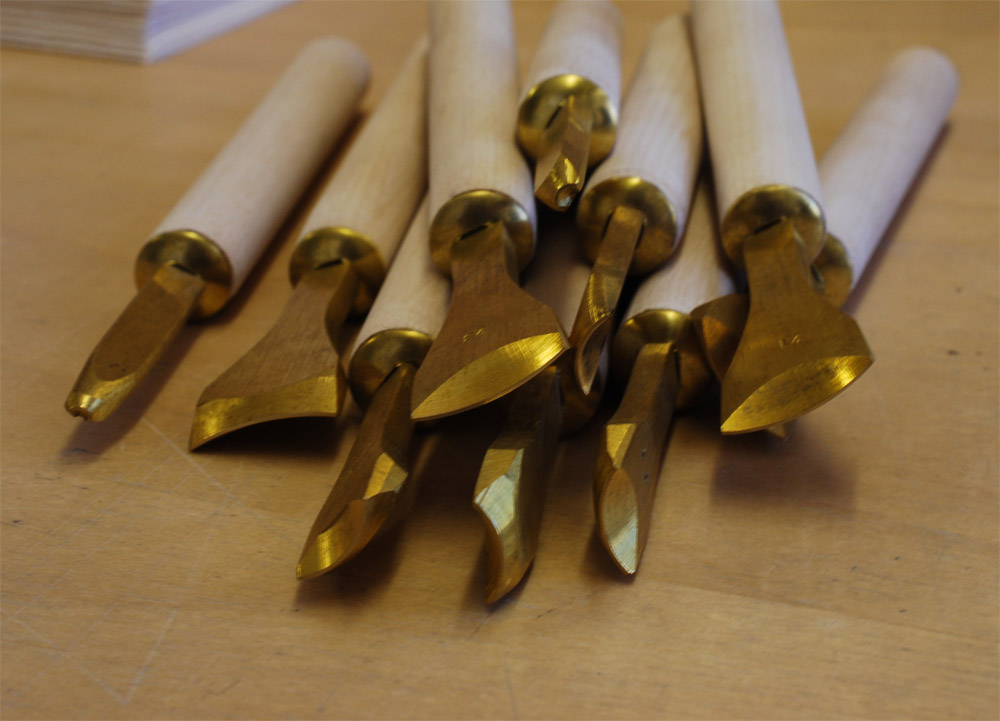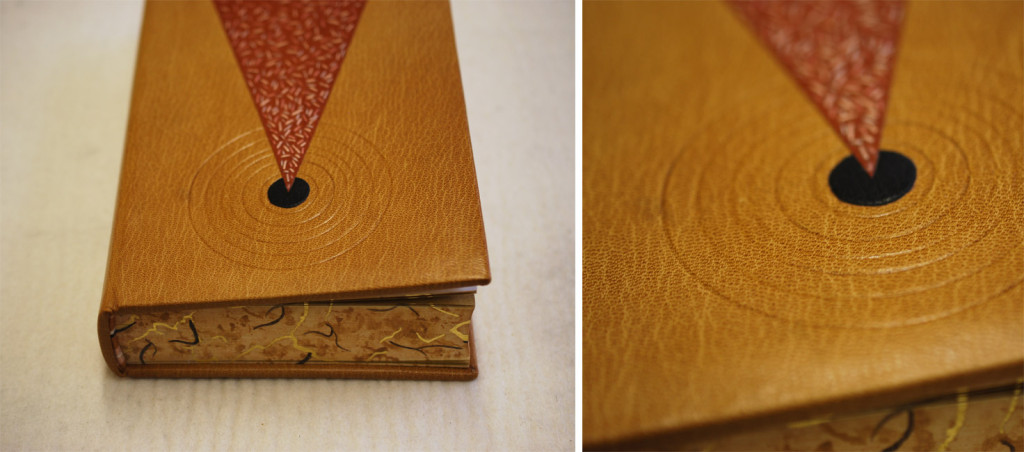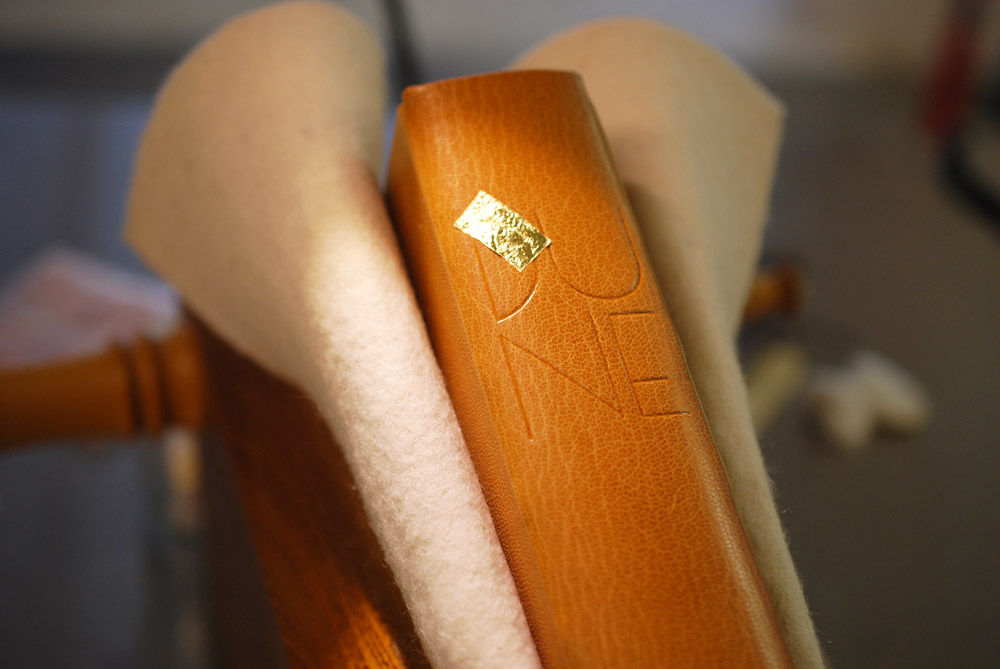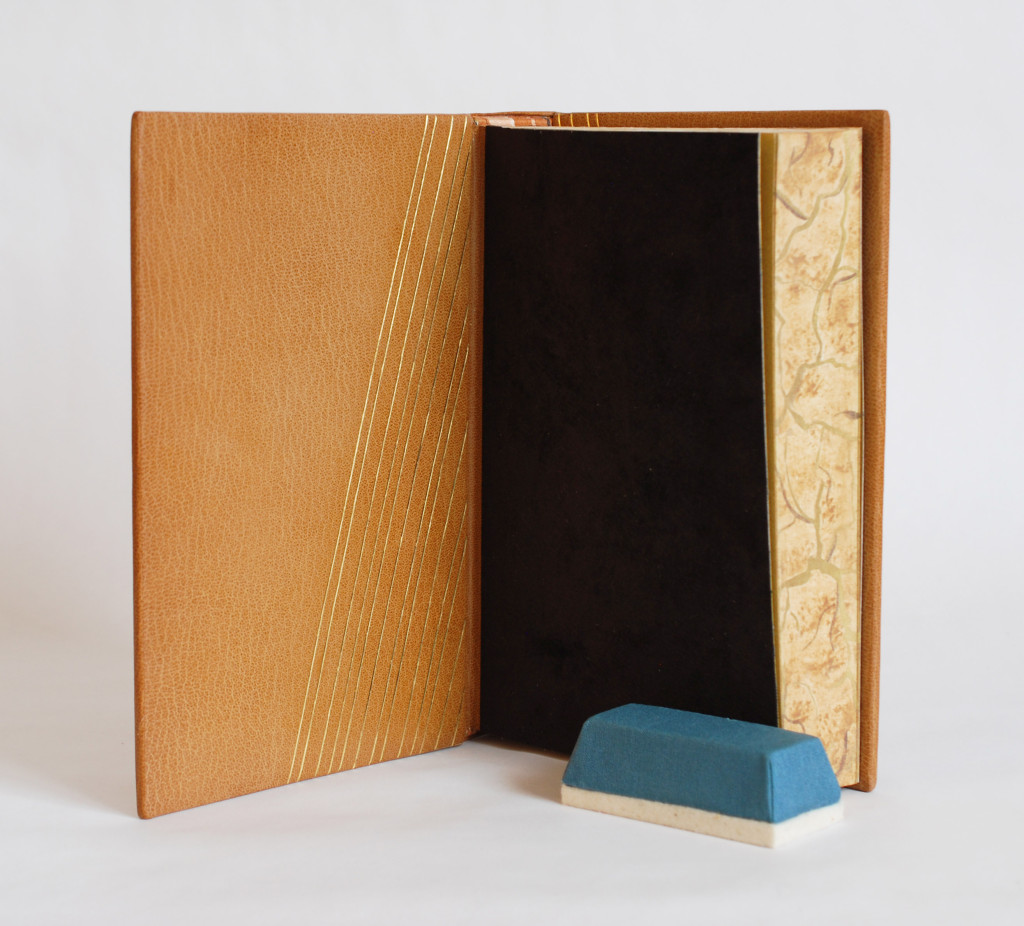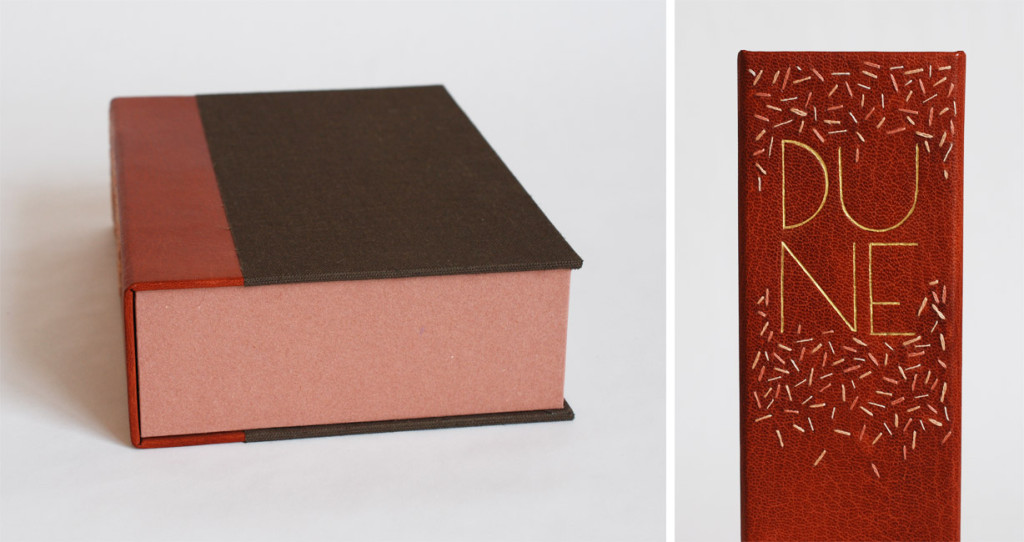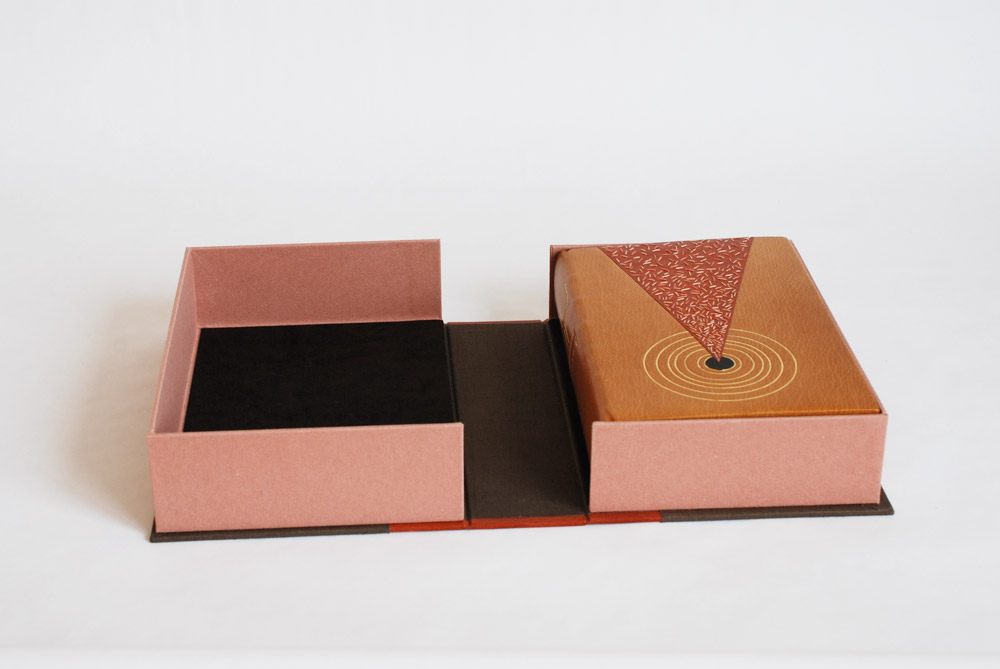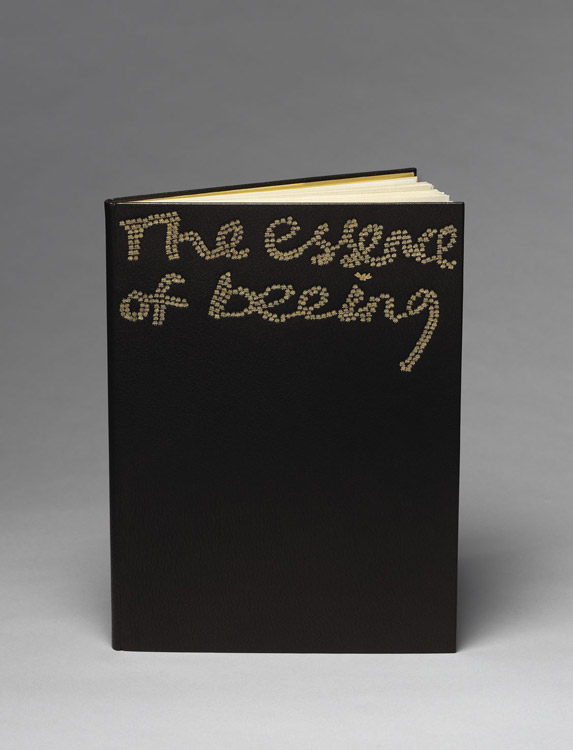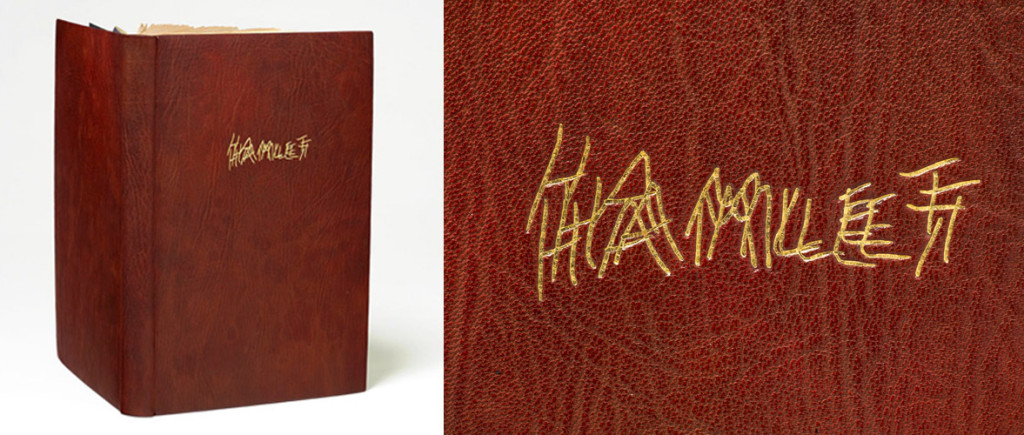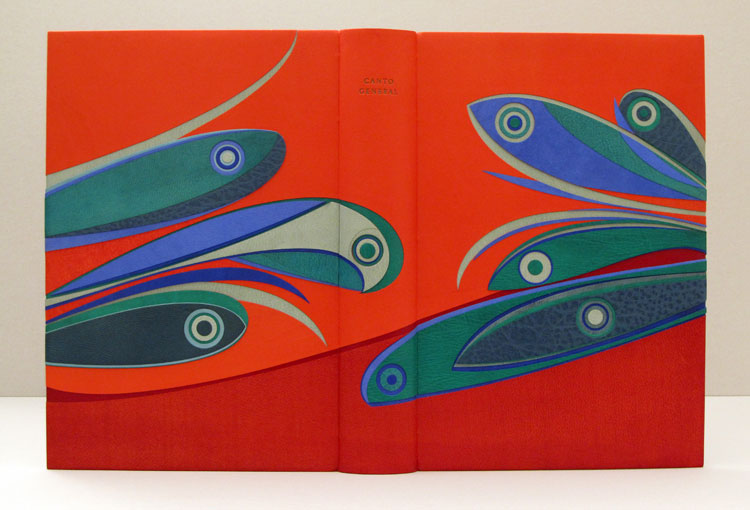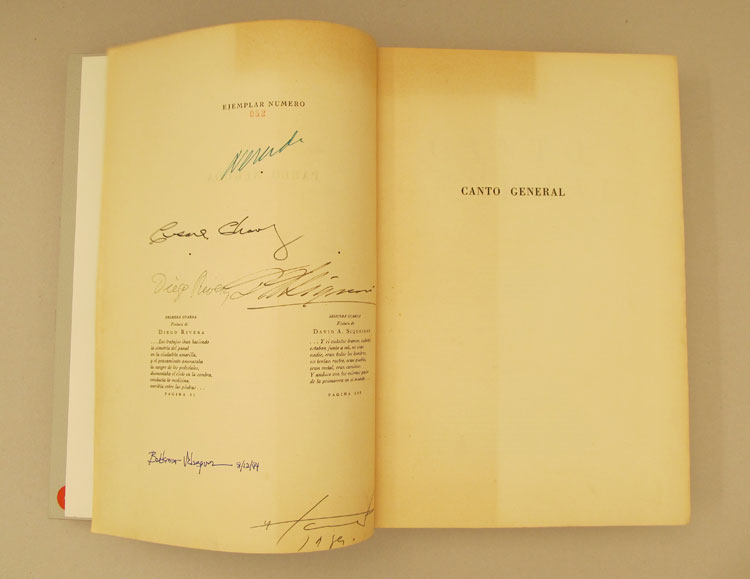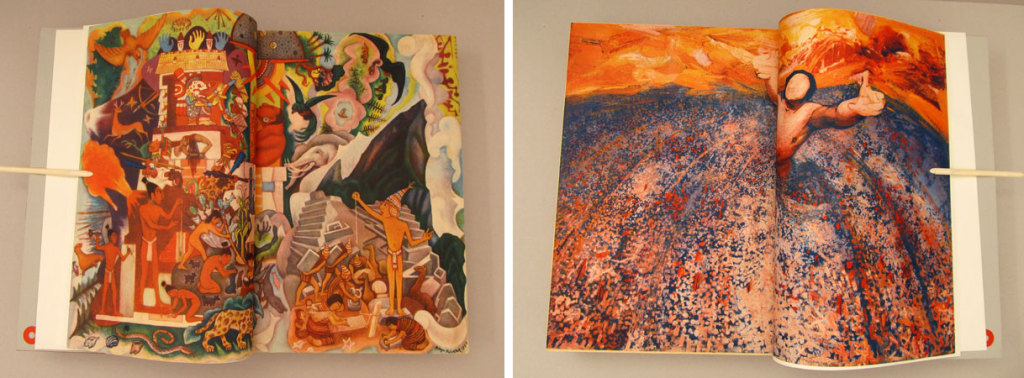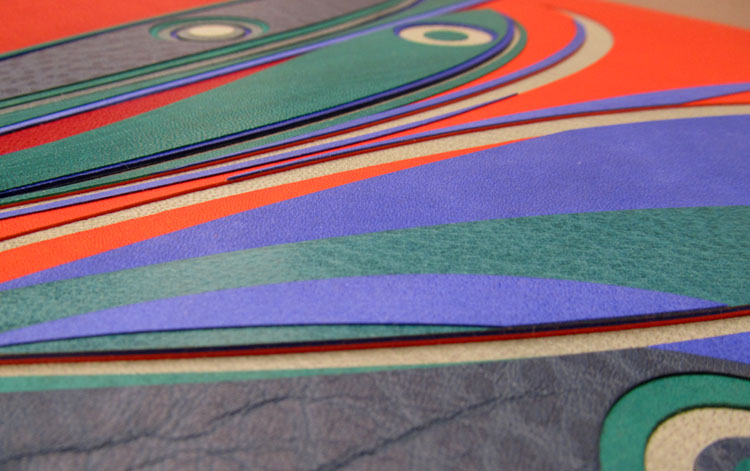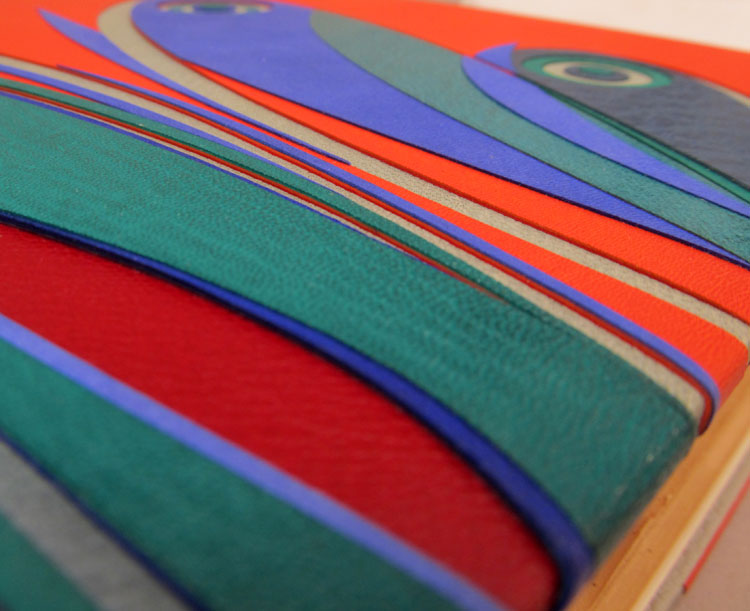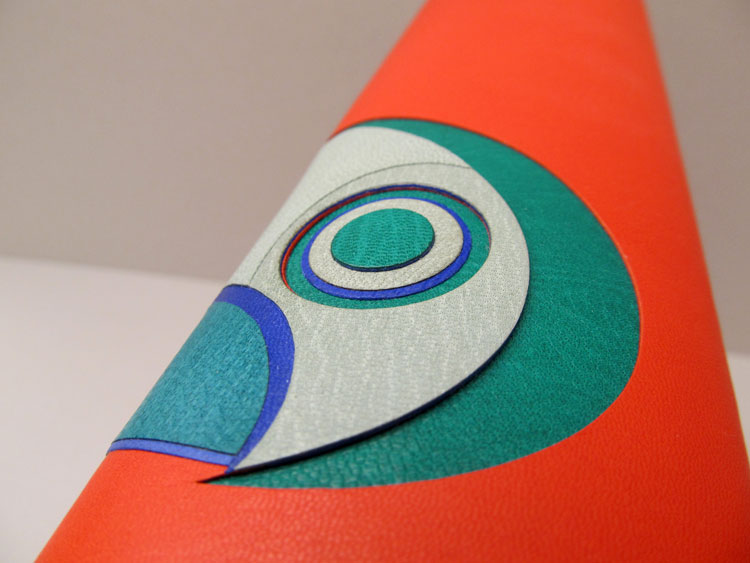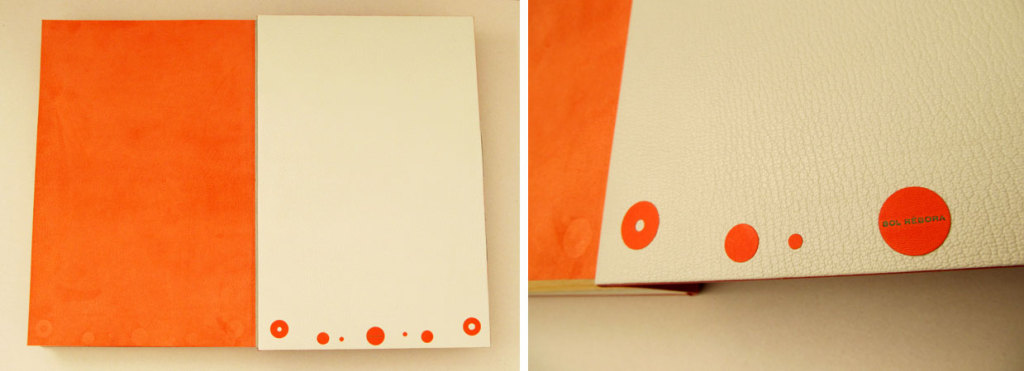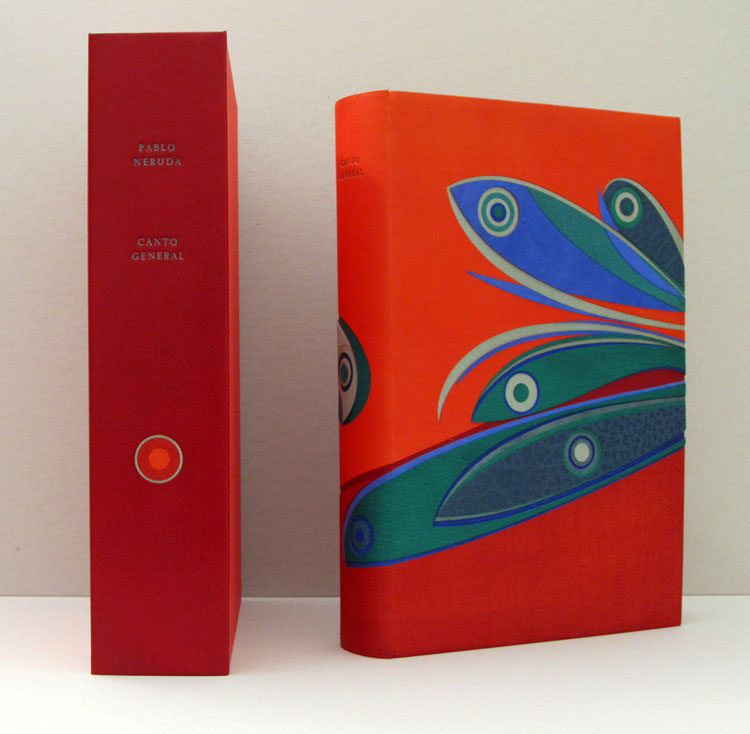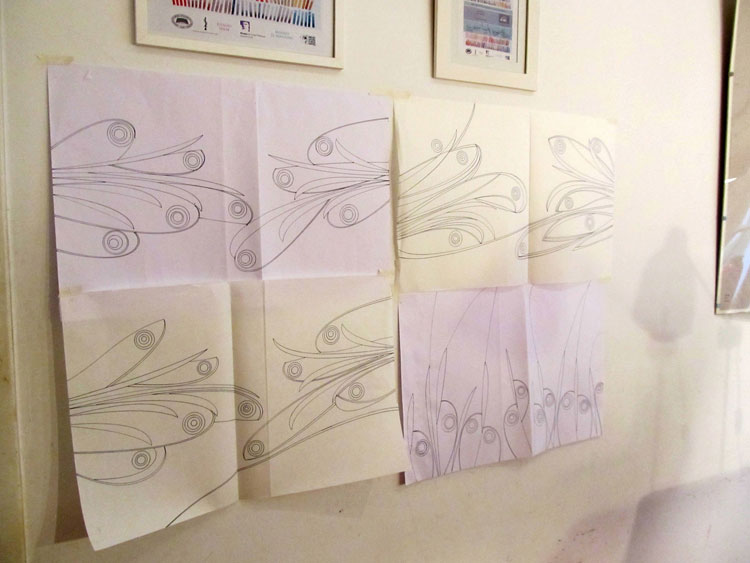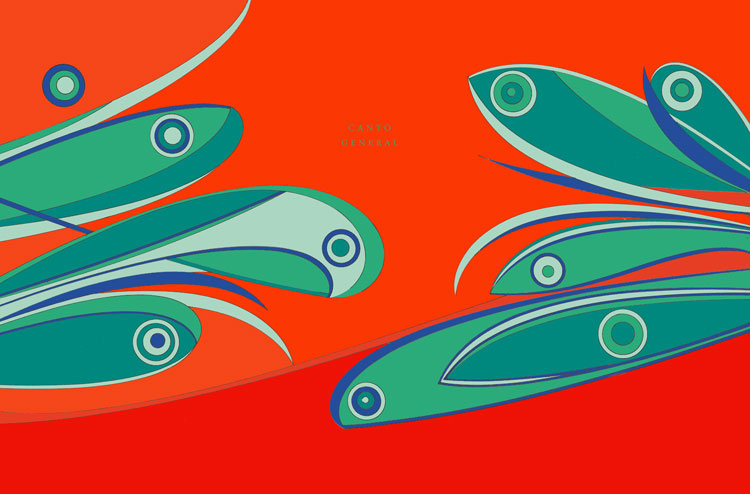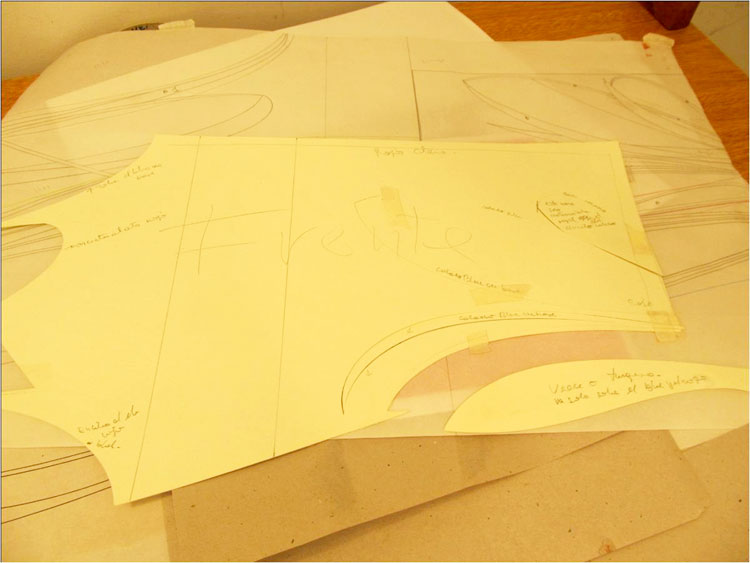I recently completed a French-style fine binding around Natalie Goldberg’s Into This World. The letterpress printed text is paired with woodblock prints both carved and printed by Clare Dunne and hand-tinted by Sialia Rieke. The texture of the prints were my inspiration for the design for the binding. By combining the natural texture of the buffalo skin with embroidery and leather onlays, I hoped to capture the pops and cracks between the layers of color.
With this plan in mind, I used a single print as my inspiration to lay out the design. For the embroidered elements of the design, I chose to play with the technique in two new ways: an embroidered title and embroidered paper doublures.
The script used for the title mimics the author’s own handwriting taken from her signature on the title page. The title was drawn onto tracing paper and taped in place, overlapping the white buffalo back-pared onlay. I tend to pre-punch the holes for embroidery, especially when I am trying to achieve something exact. For the pre-punching, I put a thin embroidery needle in my pin vise and placed the leather onto a piece foam. Then I used the tracing paper to guide my pin vise.
The embroidery for the title happened in two steps: back-stitch to spell-out the letters with french knots for the i’s dots and then I wrapped the stitches to create a raised, more defined line.
After the title was completed, several seed stitches were scattered around the binding with the majority of them appearing on the back cover. I used the same technique to pre-punch the holes for the seed stitches, this time using the full-scale template. The title and seed stitches were sewn with 2-ply cotton thread in an ochre yellow.
The second embroidered element in the binding are the edge-to-edge paper doublures. The prep for paper doublures is very similar to the set-up for leather doublures; for paper I allowed a wider turn-in as I trimmed out, this would ensure a smoother surface under the paper. Below you can see the turn-ins post covering and with the leather hinge in place.
After scoring a frame around the board and spine edge, I began to trim off the excess leather at a slight bevel. In order to create a successful doublure, several layers are added to the board (one at a time) and sanded to make the board as smooth as possible. The first layer (shown on the right in the image below) was a piece of 10pt. card, first sanded along all four edges and attached with a PVA/methylcellulose mix. After allowing that layer to dry under weight for an entire day, I sanded the edges smooth (which is the state visible in the image below).
In between these stages, I began working on the embroidered paper doublures. Referencing the same print used to inspired the covers, I traced an outline of the figure from the image. I felt that her pose embodied the sentiments of the text perfectly. Using the tracing paper once again as my guide for punching the holes, I placed the paper onto a piece of foam and poked through the tracing paper into the doublure paper.
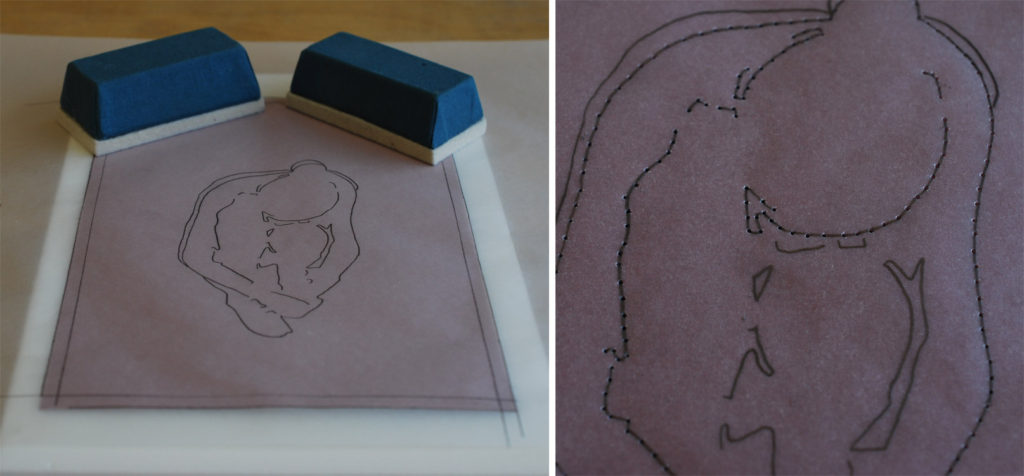
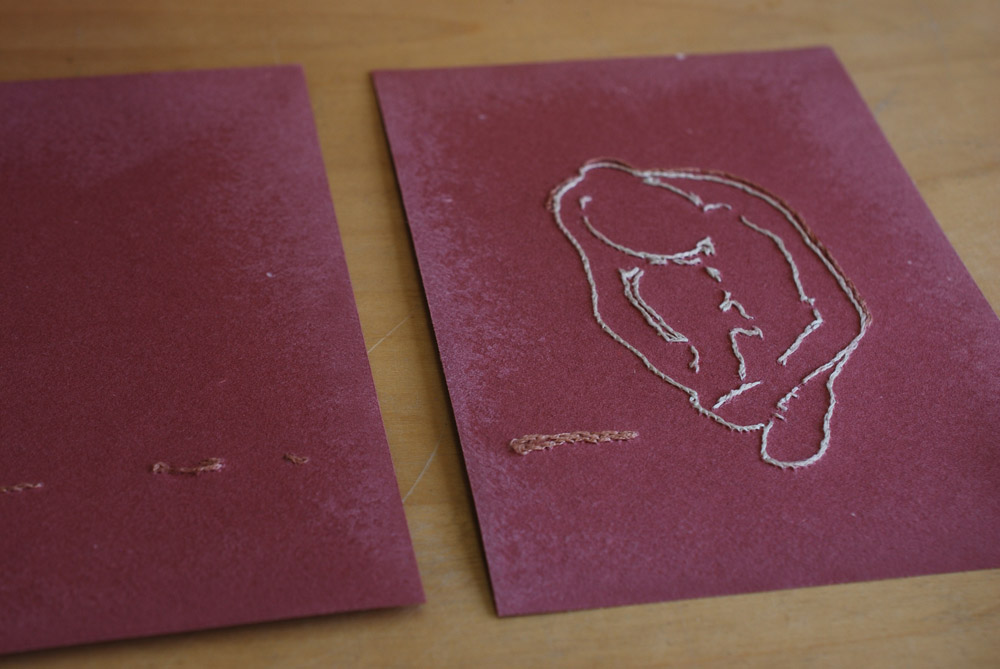
Once the paper pieces were fully embroidered, I carefully sanded the backside of the paper to create a smoother feel along the edges once glued down to the board. Below you can see the board in it’s final stage. After sanding down the 10pt. card, I attached a medium weight smooth paper. This piece was slightly oversized on three edges and sanded down on the spine side. After allowing it to dry under weight, I sanded it down smooth. The embroidered paper doublures were attached with MIX and put under weight for a day in order to dry thoroughly and to prevent the board from cupping inward.
And here are the final results. I am so pleased with the outcome of the embroidered paper doublures, it will most certainly be a technique I use again on a future binding. To see more images of the binding and it’s embroidered quarter leather clamshell box, click here.
